 FUJIFILM X-T1 (23mm, f/2.8, 1/60 sec, ISO400)
FUJIFILM X-T1 (23mm, f/2.8, 1/60 sec, ISO400)
I can’t believe that this is blogpost number 300. Blogpost 200 I dedicated to the Fuji X100. The camera that changed everything for me. Blogpost 300 I dedicate to the Fuji X system.
One of the better decisions in my life was to get me a second hand Fuji X Pro-1 for christmas in 2012. I immediately fell in love with the camera. Before my first business trip to Asia I got the Fuji XF 2.8/14 which has become my most important lens.
I love Asia. It’s busy and full of life. I love its colorful temples and its bursting street life. Asia is a photographers heaven. I must go there once for vacation to be able to focus on photography. But I’m happy with the images I got so far considered that taking pictures was restricted to evenings and weekends. In this blogpost you will find my personal favorites from various business trips to Asia.
In total there are 36 images. One roll of film. Most of them I took with the Fuji XF 2.8/14 but there are also some taken with the XF 1.4/23, the XF 2.8/27 and the XF 1.4/35. I never traveled with all those lenses. Mostly I just took the 14mm and one of the other primes with me. I love the 1.4/23 for its image quality and speed but recently preferred to take the 2.8/27 because of size and weight.
In this blogpost I also want to describe the Fuji X system and compare it to other systems on the market to answer the question if the Fuji X is the best system for travel photography. If you want the ultimate executive summary: the answer is YES.
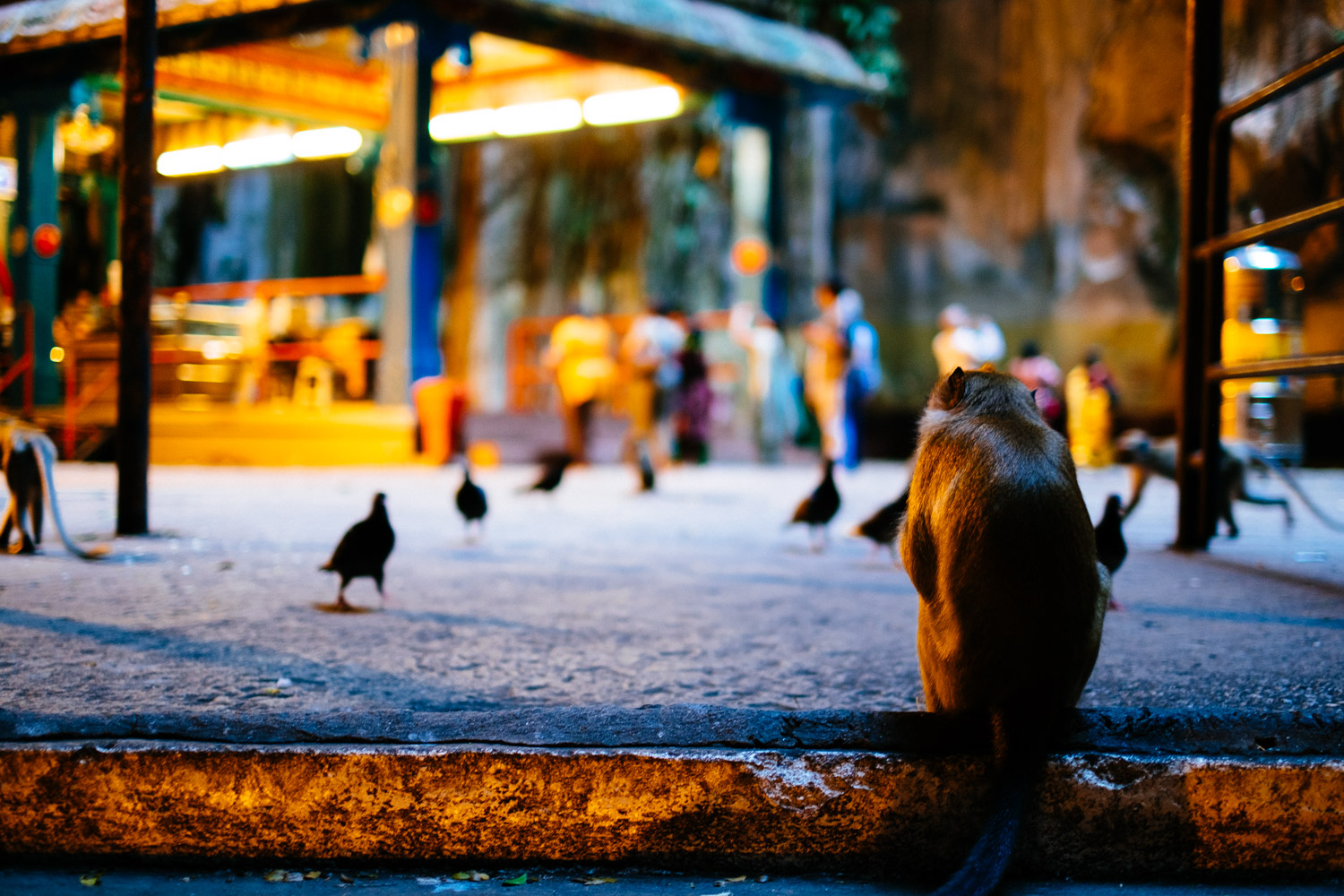 FUJIFILM X-Pro1 (35mm, f/1.4, 1/50 sec, ISO400)
FUJIFILM X-Pro1 (35mm, f/1.4, 1/50 sec, ISO400)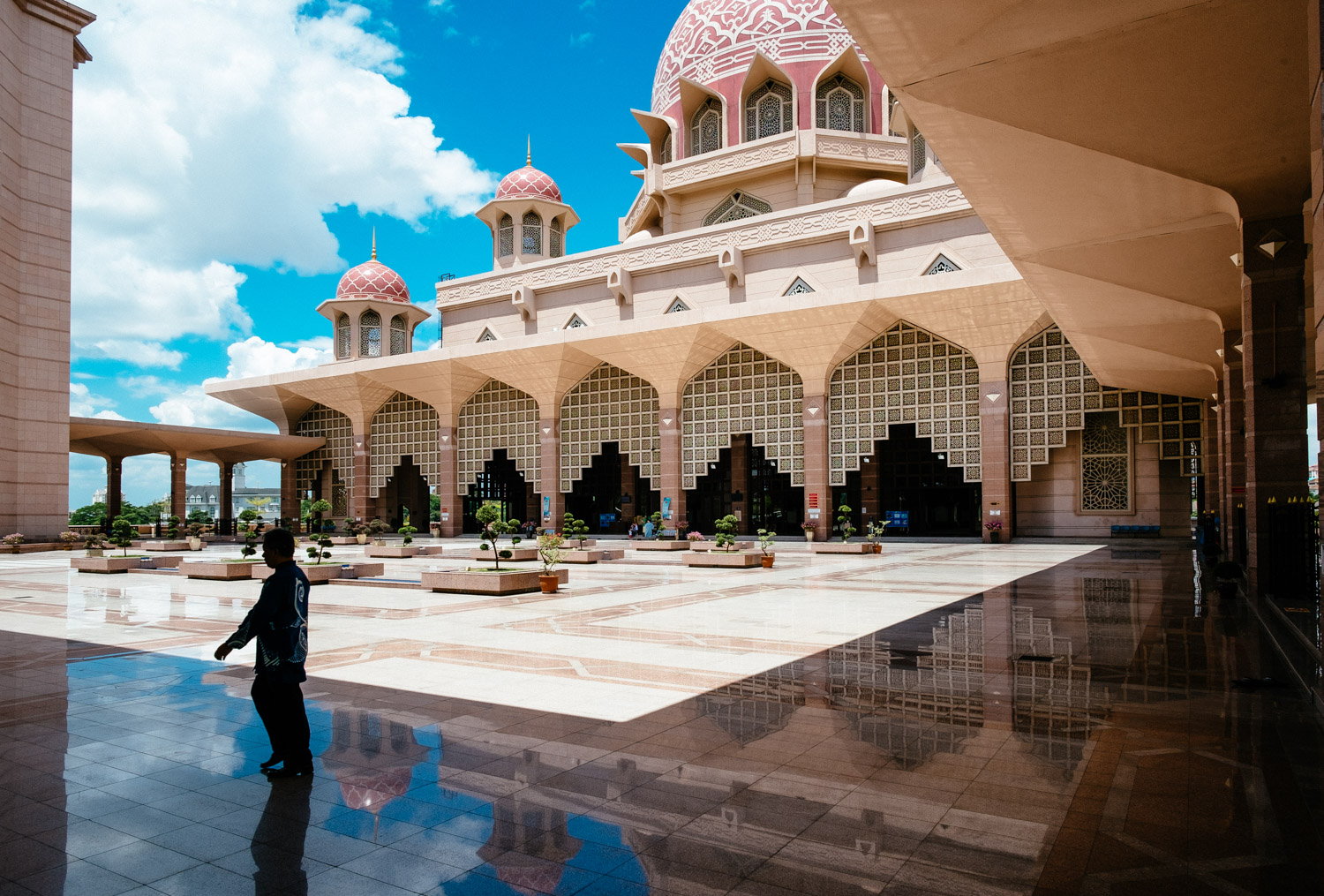 FUJIFILM X-Pro1 (14mm, f/8, 1/280 sec, ISO200)
FUJIFILM X-Pro1 (14mm, f/8, 1/280 sec, ISO200)
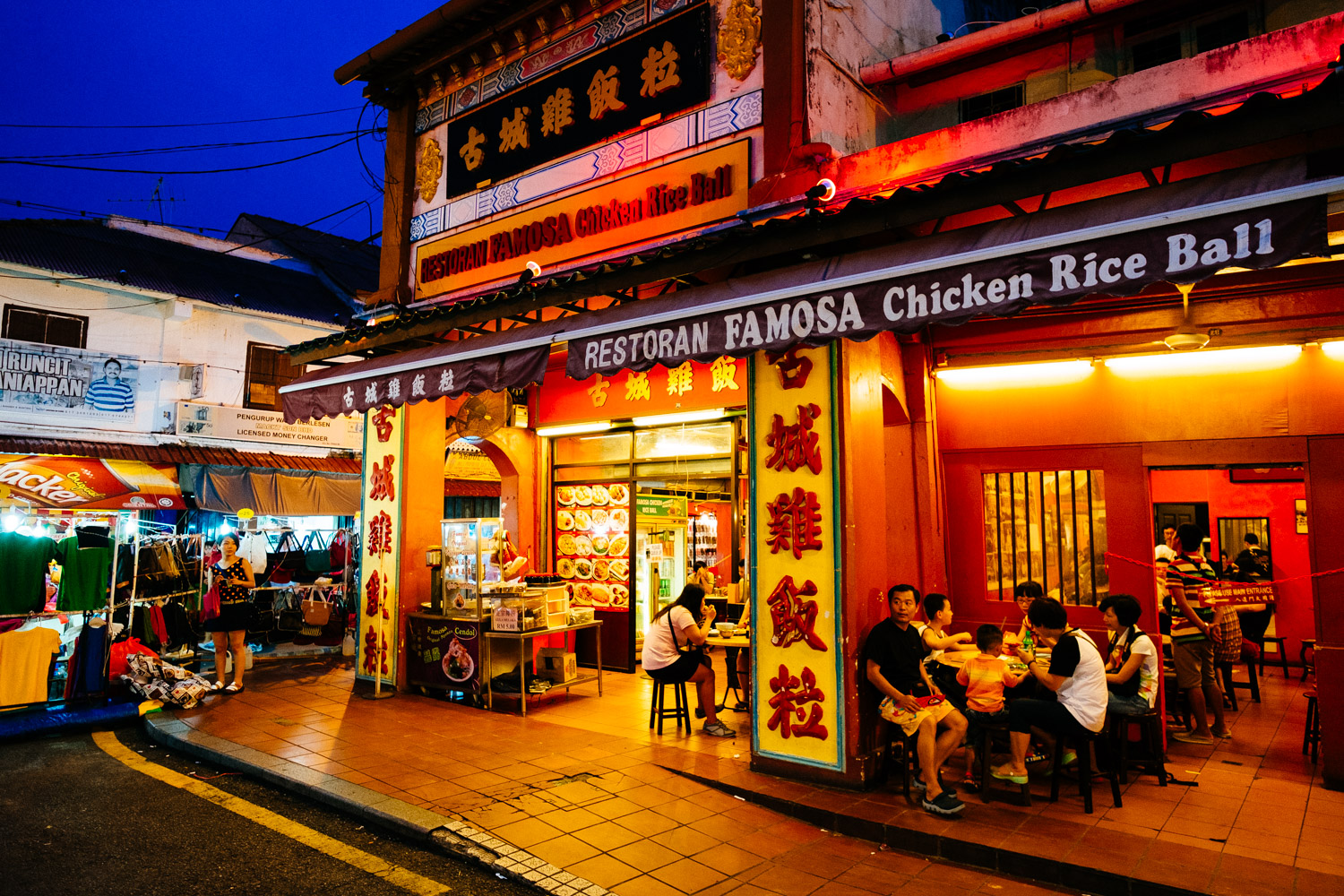 FUJIFILM X-Pro1 (14mm, f/2.8, 1/60 sec, ISO1600)
FUJIFILM X-Pro1 (14mm, f/2.8, 1/60 sec, ISO1600)
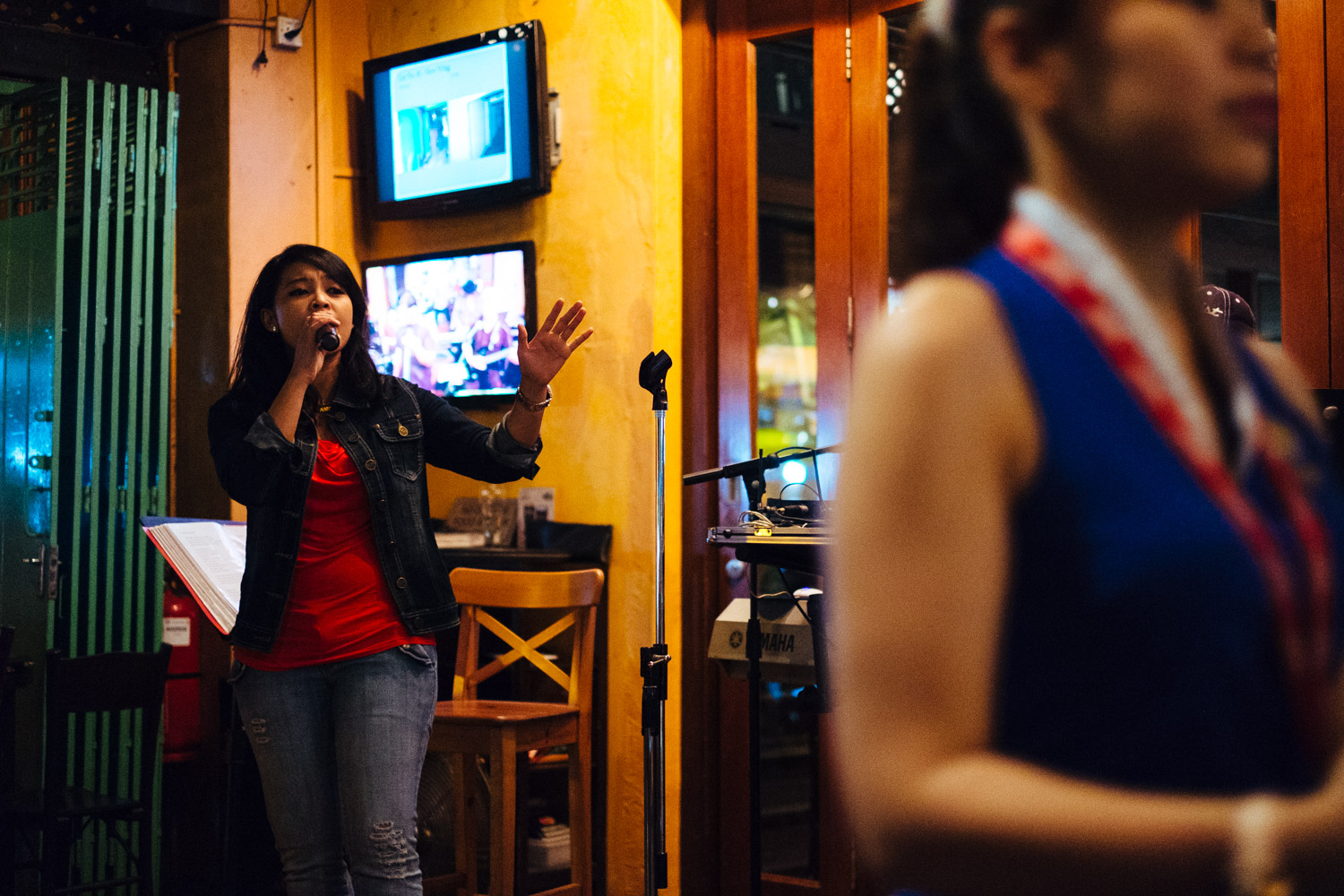 FUJIFILM X-Pro1 (35mm, f/1.4, 1/125 sec, ISO4000)
FUJIFILM X-Pro1 (35mm, f/1.4, 1/125 sec, ISO4000)
The first image I took in Chinatown, Bangkok / Thailand. The other four images above are taken in either Kuala Lumpur or Malacca / Malaysia.
What’s so special about the Fuji X cameras?
There are cameras with higher resolution, better dynamic range, less noise and there are certainly faster cameras BUT I can’t think of any camera system that is better suited for travel photography. I would never take my Canon full frame DSLR plus its big and heavy lenses to a business trip but I also don’t want to rely on a compact camera or my iPhone when I go to such wonderful places. The Fuji X Pro-1 and now the Fuji X-T1 give me fantastic image quality in a small package. Its low light performance is truly impressive. Combine outstanding high ISO quality with fast primes and you get results that rival most full frame cameras.
On my last trip to India I took nothing but the Fuji X-T1, the 14mm and the 27mm lens plus the Ricoh GR. Everything fits easily in my ThinkTank Retrospective 5 bag. Together with my wallet and two large smartphones. Best thing is that the Retrospective bag also fits inside the main compartment of my Samsonite Mobile Office trolley. Now I can hide my camera bag to avoid to look like a photo geek when seeing new potential business partners.
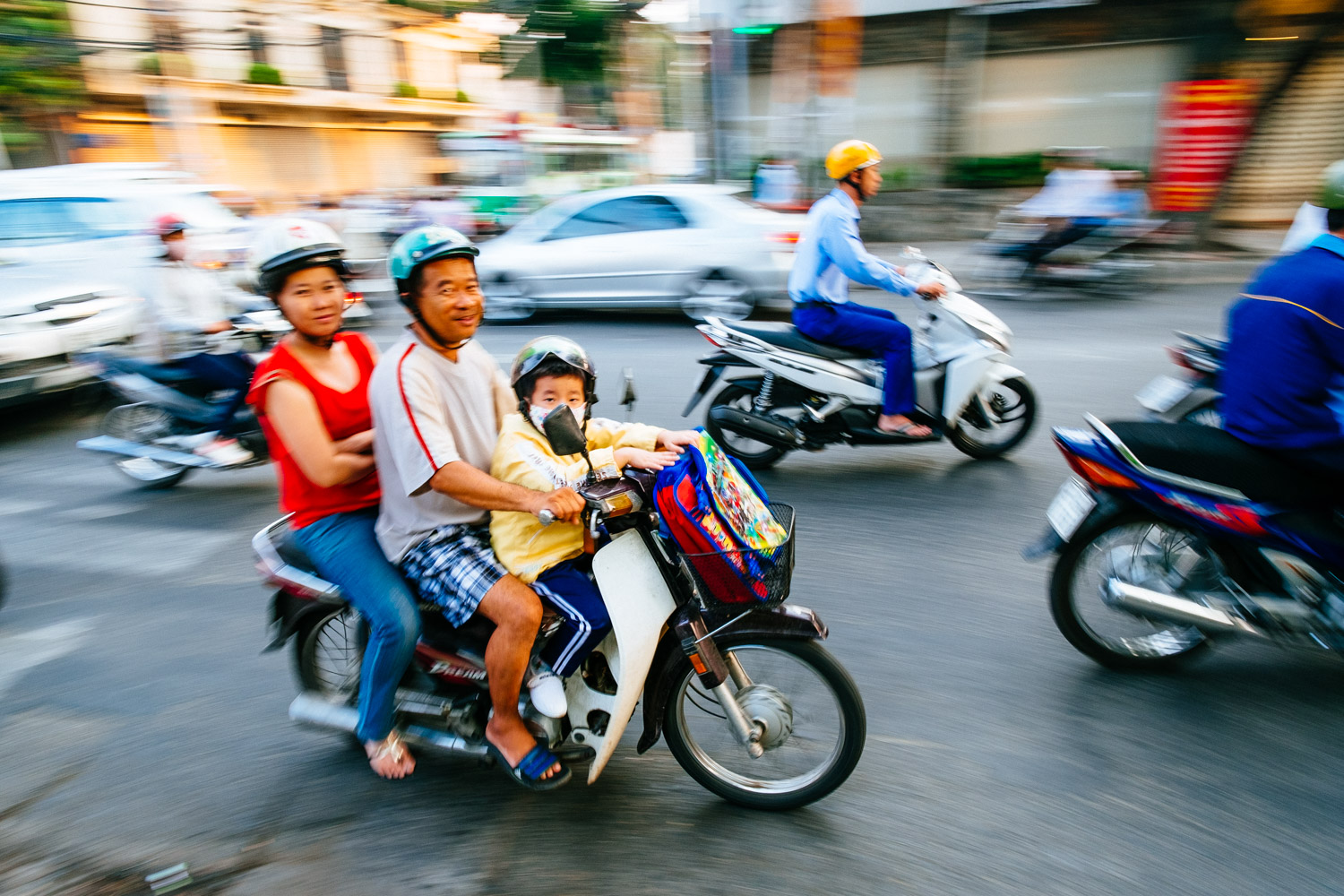 FUJIFILM X-Pro1 (14mm, f/8, 1/30 sec, ISO320)
FUJIFILM X-Pro1 (14mm, f/8, 1/30 sec, ISO320)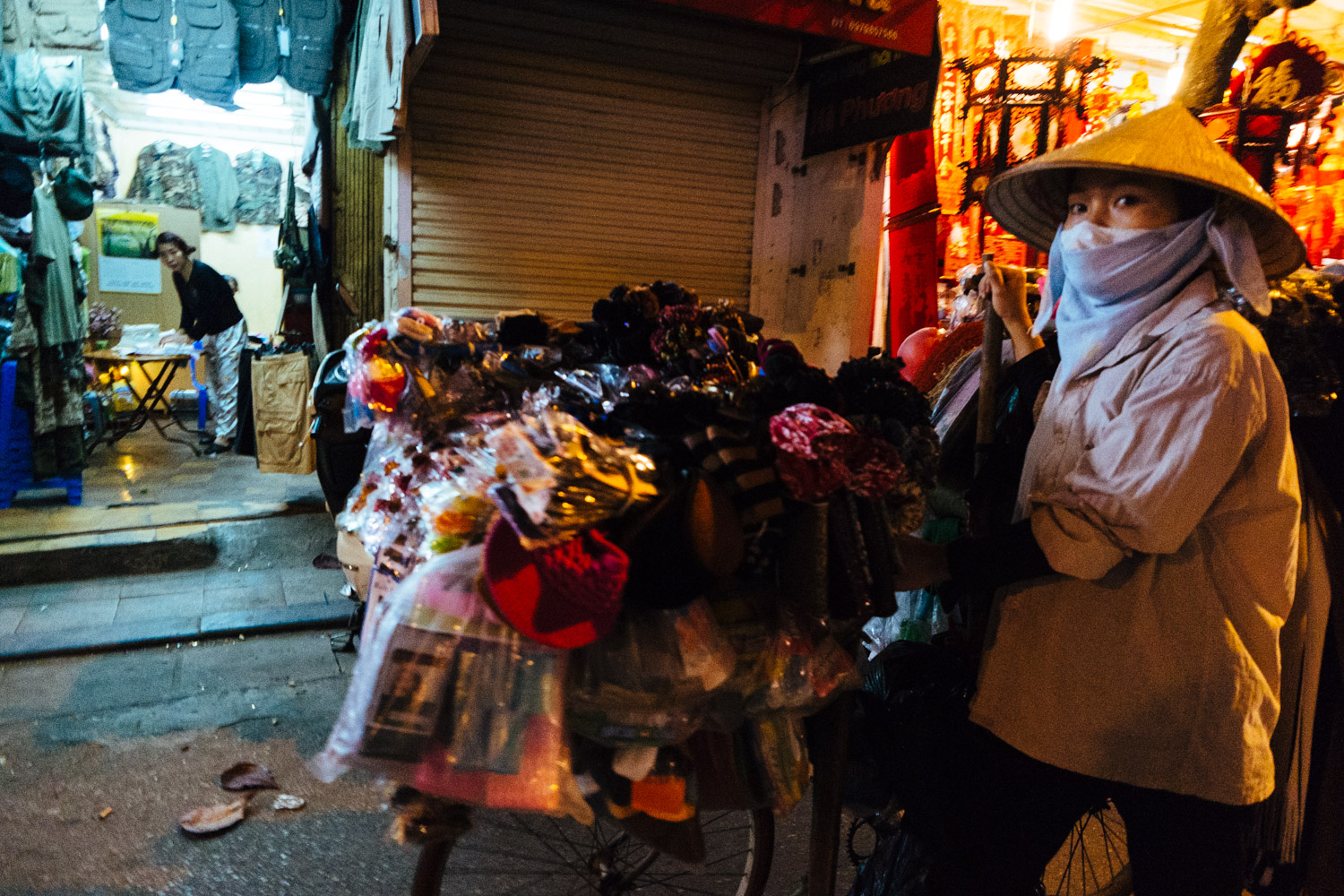 FUJIFILM X-Pro1 (14mm, f/2.8, 1/125 sec, ISO6400)
FUJIFILM X-Pro1 (14mm, f/2.8, 1/125 sec, ISO6400)
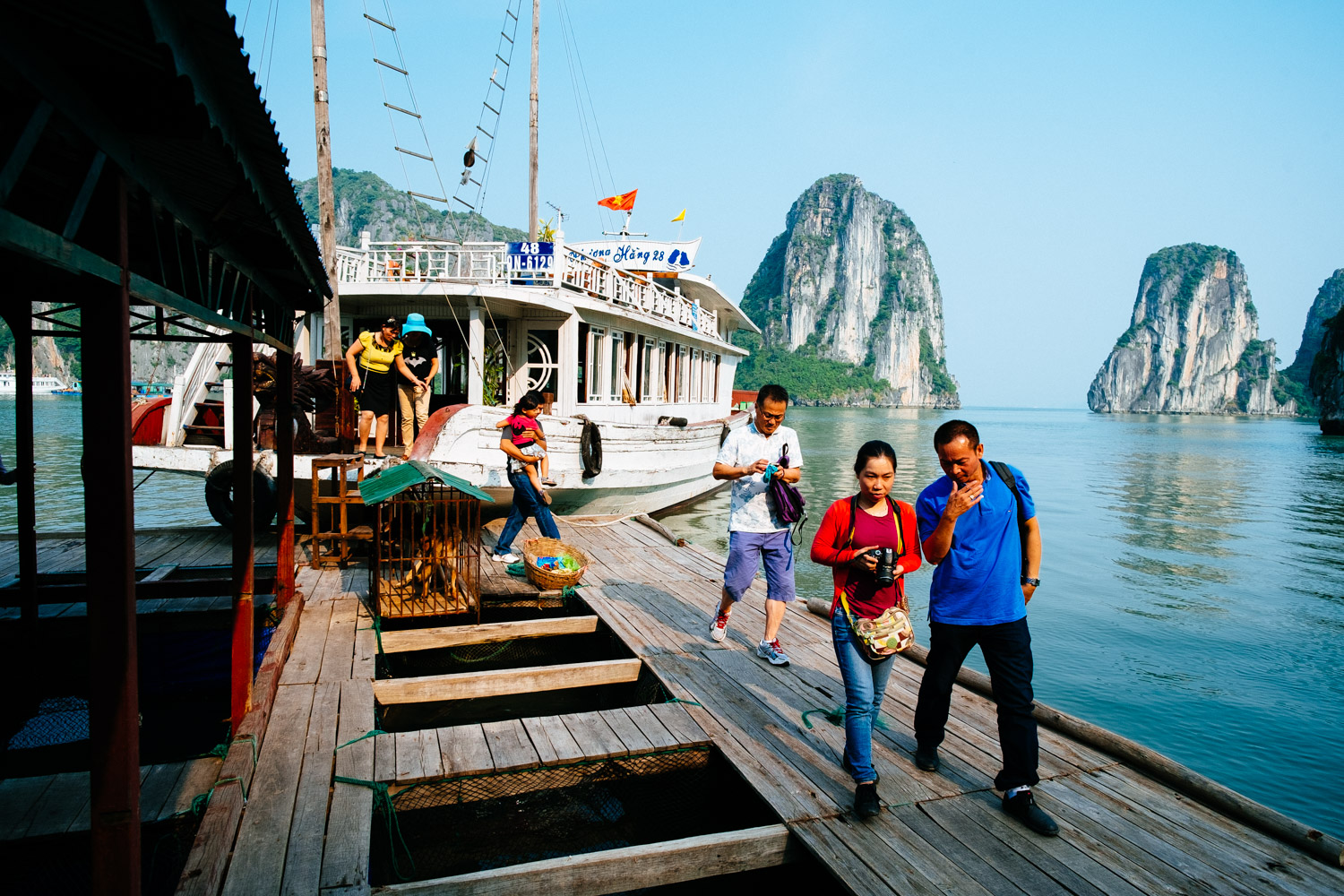 FUJIFILM X-Pro1 (14mm, f/4.5, 1/680 sec, ISO200)
FUJIFILM X-Pro1 (14mm, f/4.5, 1/680 sec, ISO200)
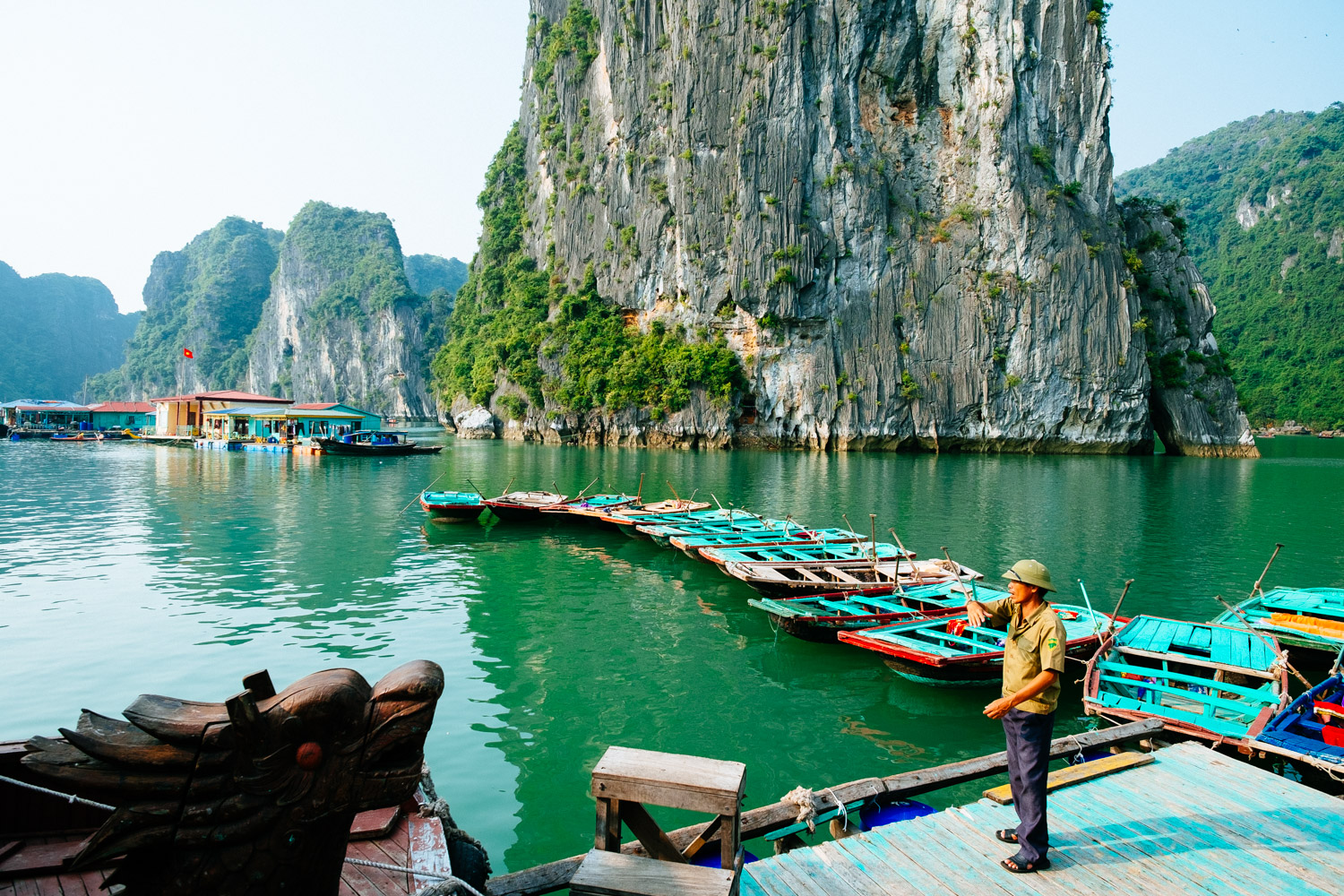 FUJIFILM X-Pro1 (14mm, f/5.6, 1/350 sec, ISO200)
FUJIFILM X-Pro1 (14mm, f/5.6, 1/350 sec, ISO200)
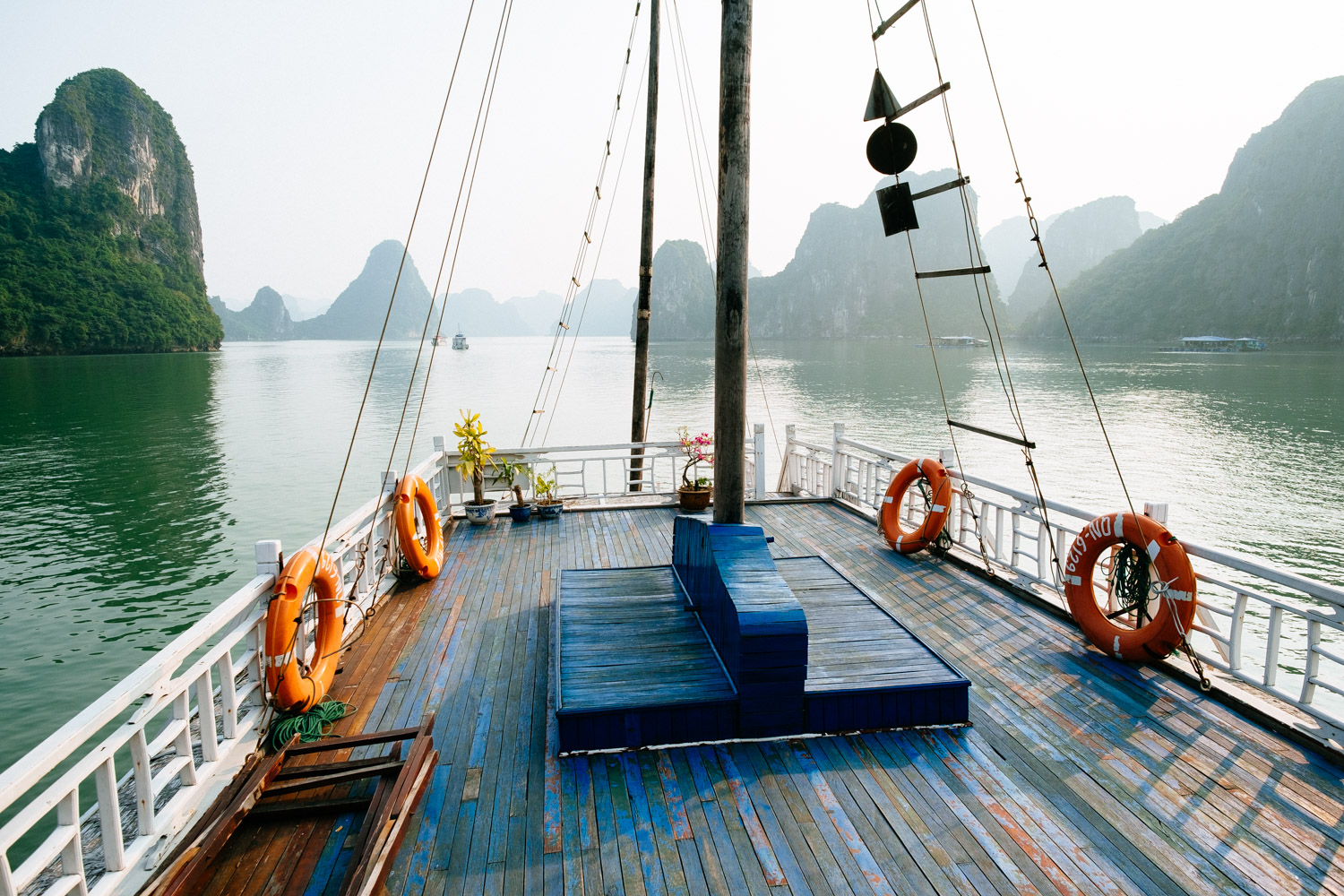 FUJIFILM X-Pro1 (14mm, f/5.6, 1/600 sec, ISO200)
FUJIFILM X-Pro1 (14mm, f/5.6, 1/600 sec, ISO200)
The images above are taken in HCMC, Hanoi and Ha Long Bay Vietnam.
There is a Lens for Everyone:
The clear advantage of Fuji’s X-system is weight. It was made with travel photographers in mind. When it first came out there was no zoom lens but three primes. The super small and fast 2/18, the 1.4/35 and strangely a 2.4/60 close up lens. The zooms came later. Unfortunately the latest lens releases from Fuji were anything but small and compact. A big and heavy 2.8/50-140 OIS and a massive 2.8/16-55. Both are weather sealed but the 16-55 lacks image stabilisation. I think those two lenses are targeted to wedding and event shooters. Correction: The lens is not that massive and it is fantastic. It has become my favourite Fuji zoom.
There is a 18-135 OIS WR travel zoom but it is also rather big and heavy and 18mm on a crop sensor is just not wide enough. Combined with the 10-24 zoom it could make a very nice travel combo though if weight is not that important. And with a second camera body it’s a perfect way to avoid lens changes.
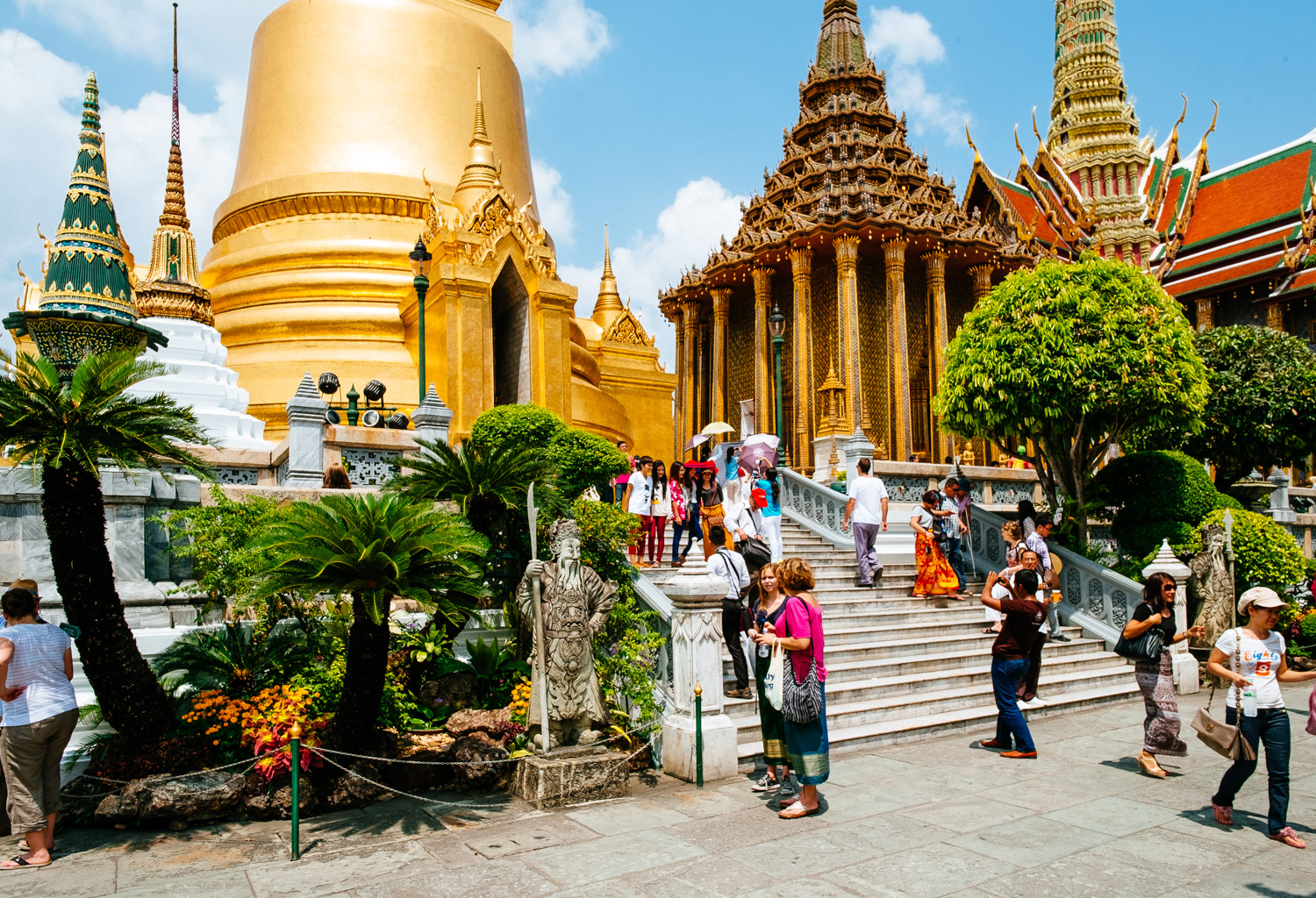 FUJIFILM X-Pro1 (14mm, f/9, 1/250 sec, ISO200)
FUJIFILM X-Pro1 (14mm, f/9, 1/250 sec, ISO200)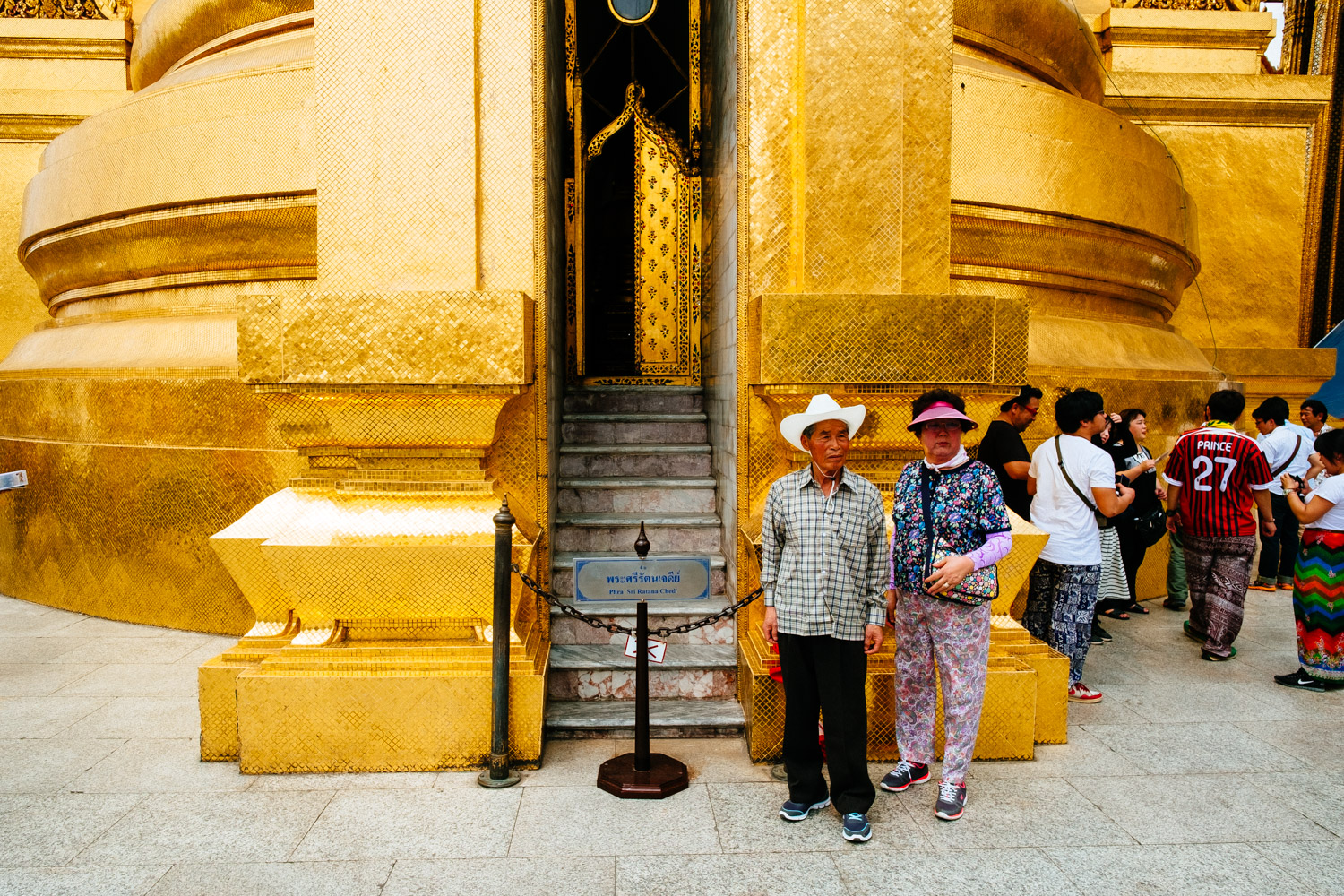 FUJIFILM X-Pro1 (14mm, f/9, 1/240 sec, ISO200)
FUJIFILM X-Pro1 (14mm, f/9, 1/240 sec, ISO200)
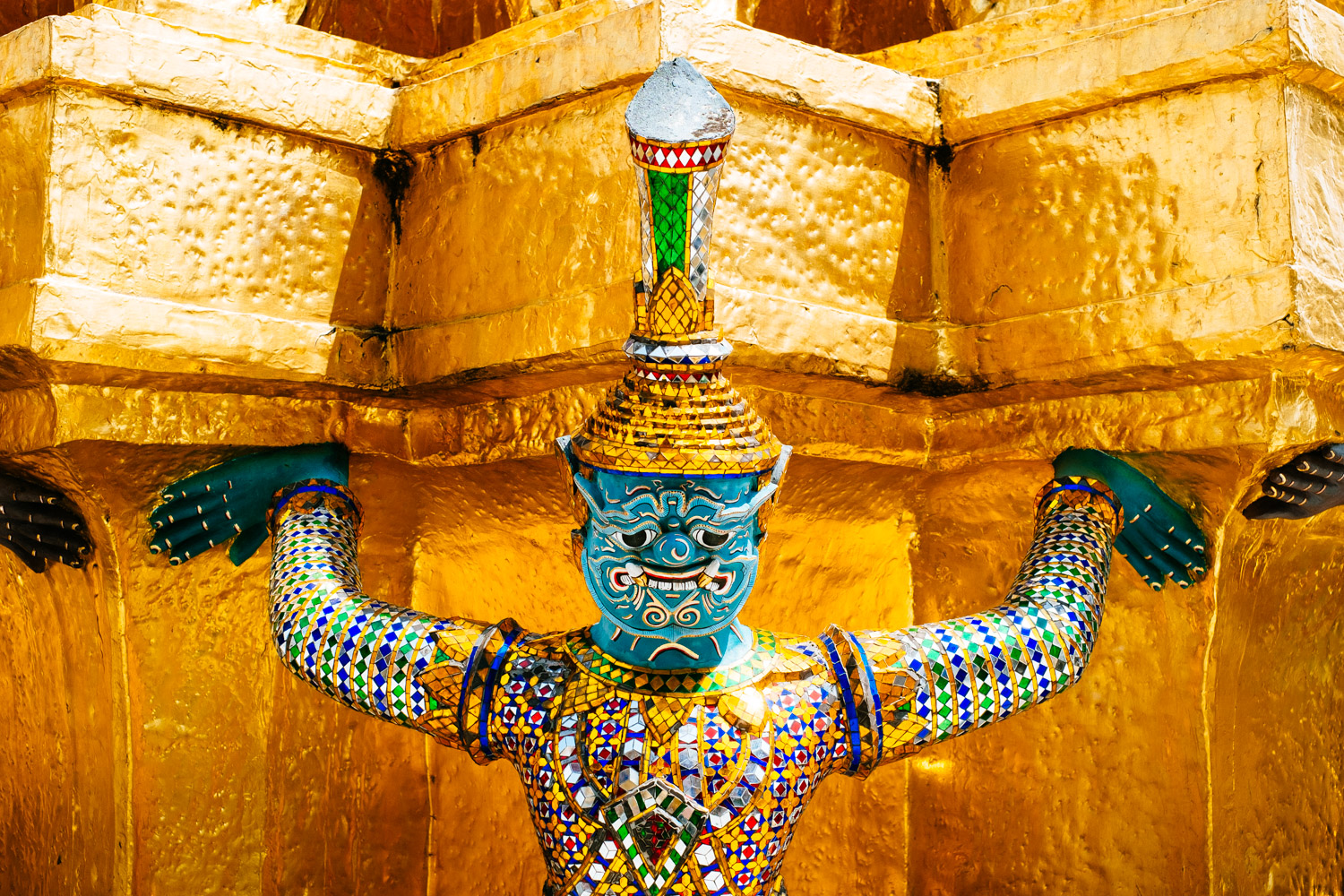 FUJIFILM X-Pro1 (35mm, f/5, 1/680 sec, ISO200)
FUJIFILM X-Pro1 (35mm, f/5, 1/680 sec, ISO200)
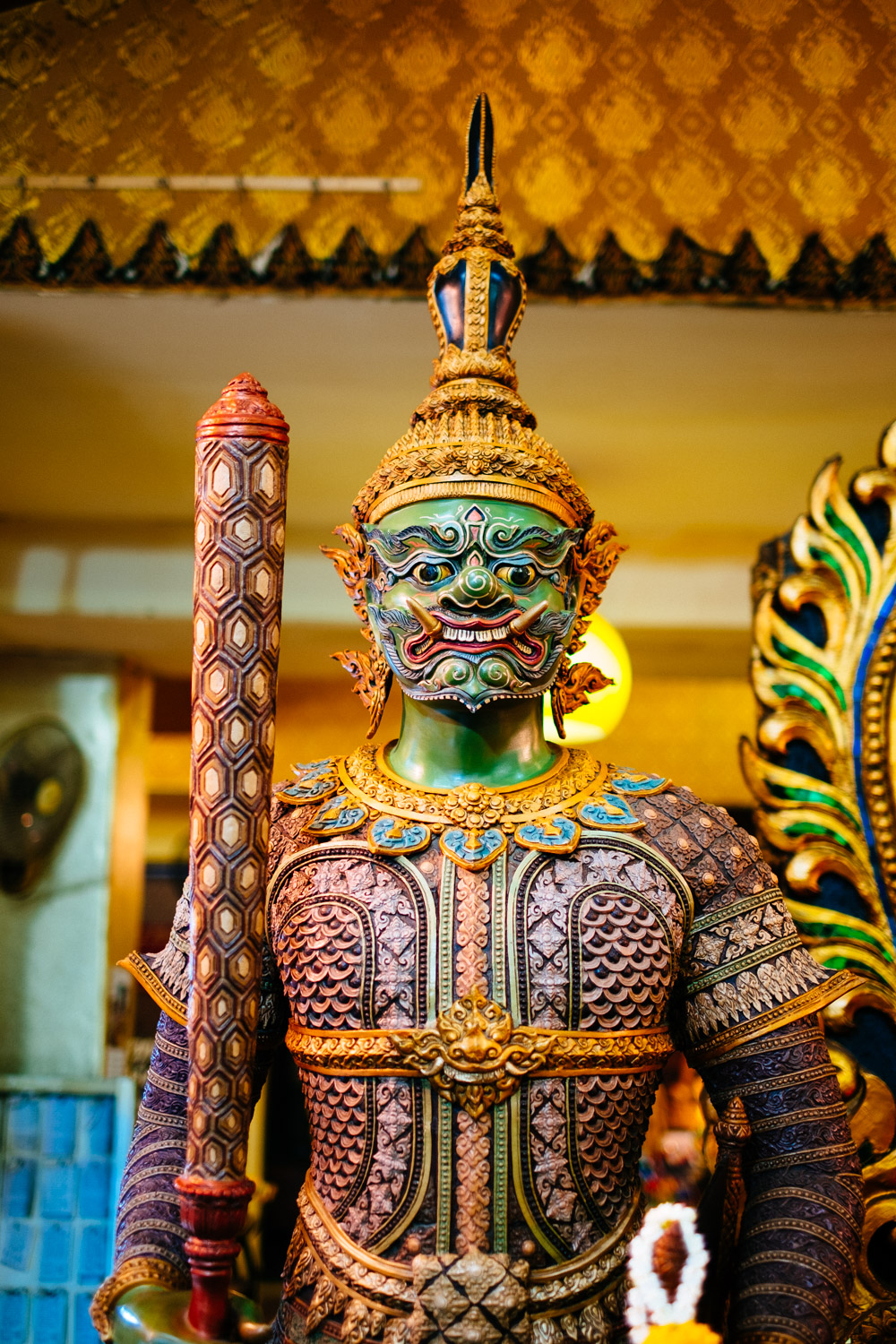 FUJIFILM X-Pro1 (35mm, f/1.4, 1/60 sec, ISO320)
FUJIFILM X-Pro1 (35mm, f/1.4, 1/60 sec, ISO320)
The four images above are taken in Bangkok / Thailand. The first three at the Palace Temple. The last one inside a small temple.
But for me weight is important. If it is not I take my Canon 6D plus 16-35 IS, 24-70 II and the 70-200 IS II. That’s why I prefer primes on my Fuji. The standard kit lens, the 18-55 OIS, is also small and compact but unfortunately it is not wide enough. A compact 16-55 OIS would be a different story. But even than I think I would still prefer the fantastic 2.8/14mm.
The 14mm is my standard lens and it is always with me. What other lenses to bring is more tricky. The Retrospective 5 bag is rather small. It can hold the X-T1 plus two lenses but in my case it also has to carry my wallet and two smartphones. So it is one more lens. The 1.4/23 is fantastic but rather big and heavy. The 1.4/35 is great and offers good subject isolation but it is more of a portrait lens. Update: I replaced my big wallet with something much more compact which means one camera body and three small lenses: 14/2.8, 23/2 and 35/1.4.
On my last trip I took the 1.4/23 because this focal length works better for me. But on my last trip to Asia I also bought the 2.8/27 at a very low price. I didn’t expect much but liked the size. After the first couple of shots I was surprised and impressed. This is a great, little lens. It gives a sharp and contrasty image. Much better than what you would expect from a pancake.
I just returned from a trip to India where I took nothing but the 14mm and the 27mm. It worked great and I enjoyed my lightest camera gear since I replaced my Fuji X100 with the Fuji X Pro-1.
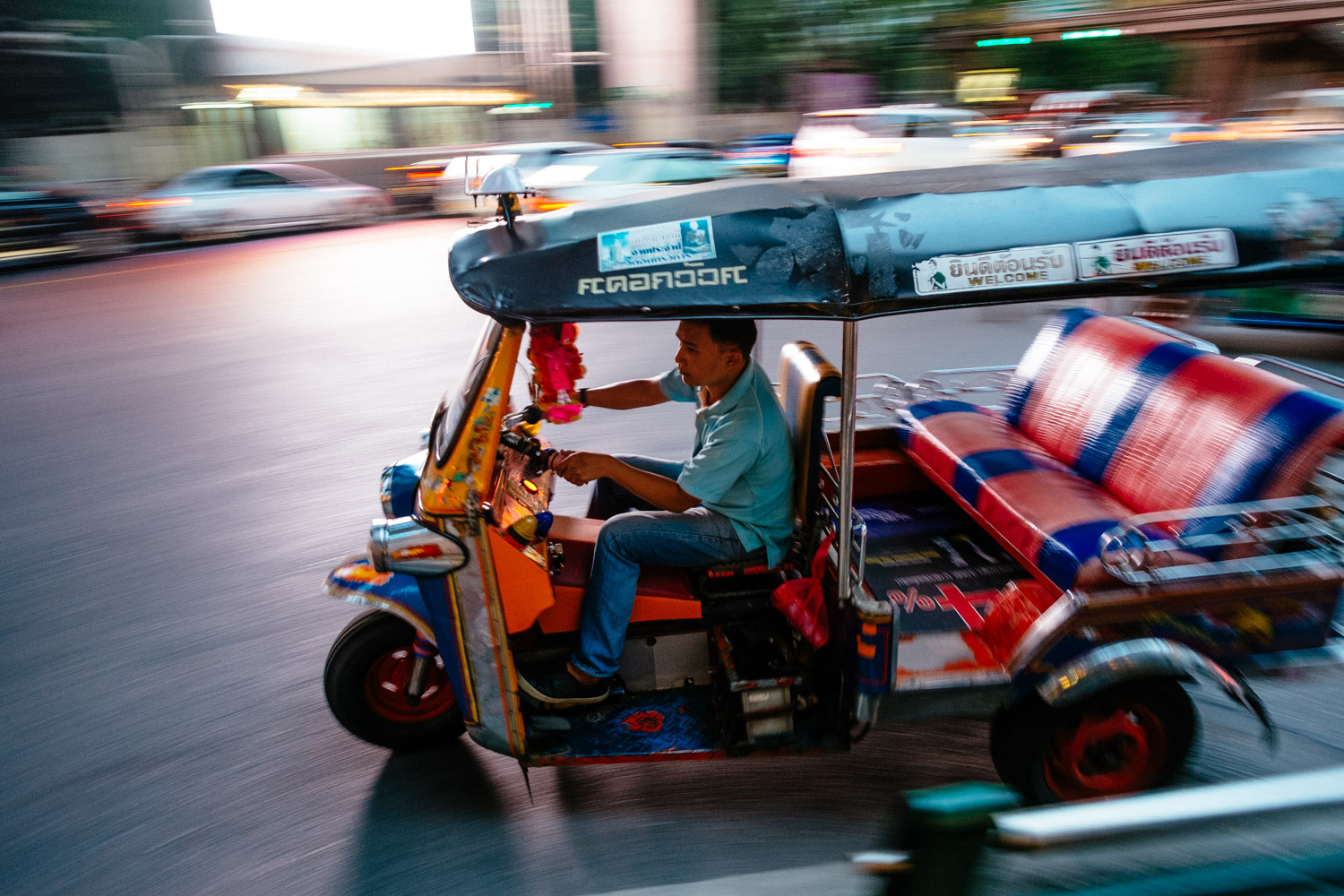 FUJIFILM X-Pro1 (14mm, f/4, 1/30 sec, ISO2000)
FUJIFILM X-Pro1 (14mm, f/4, 1/30 sec, ISO2000)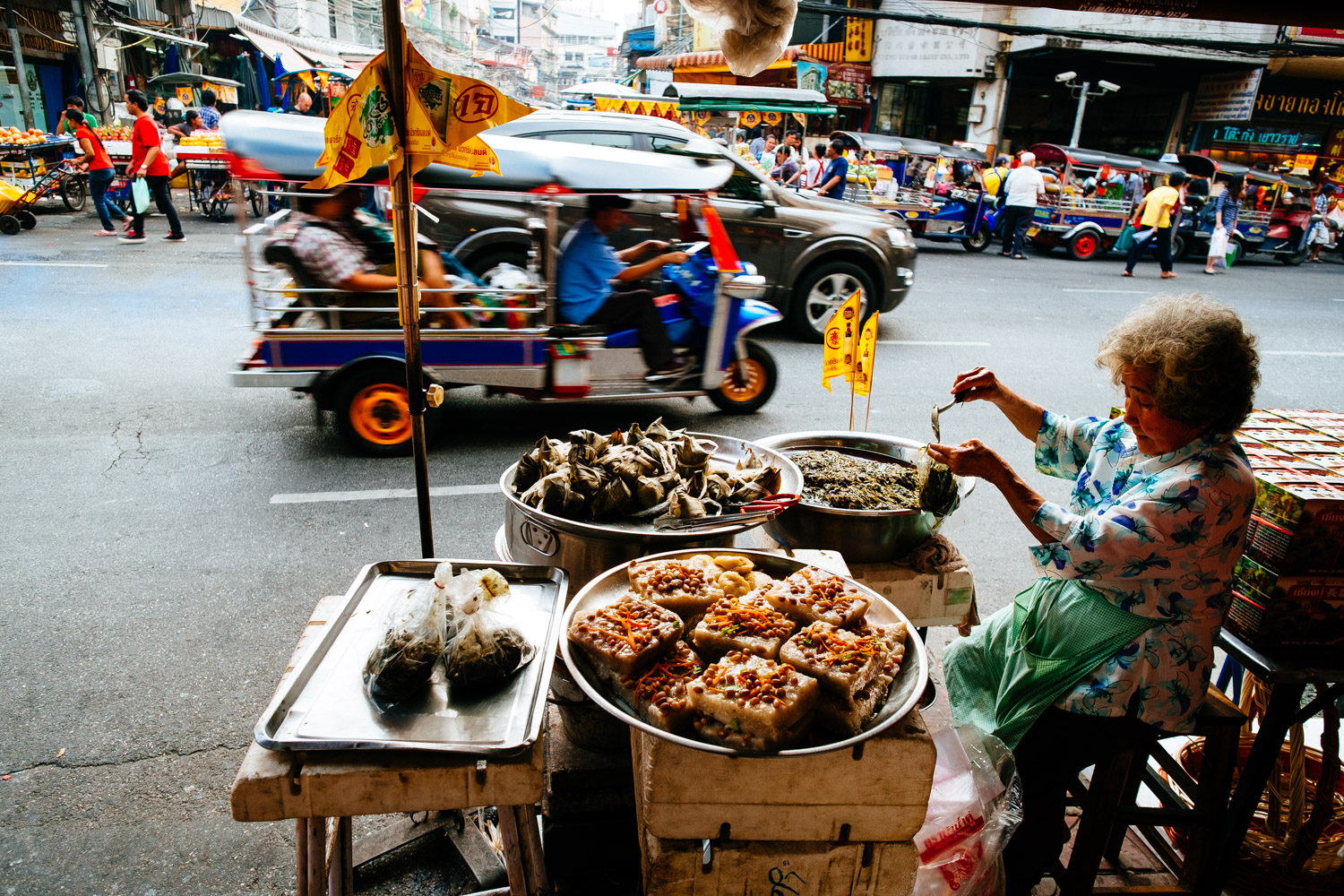 FUJIFILM X-Pro1 (14mm, f/4, 1/125 sec, ISO250)
FUJIFILM X-Pro1 (14mm, f/4, 1/125 sec, ISO250)
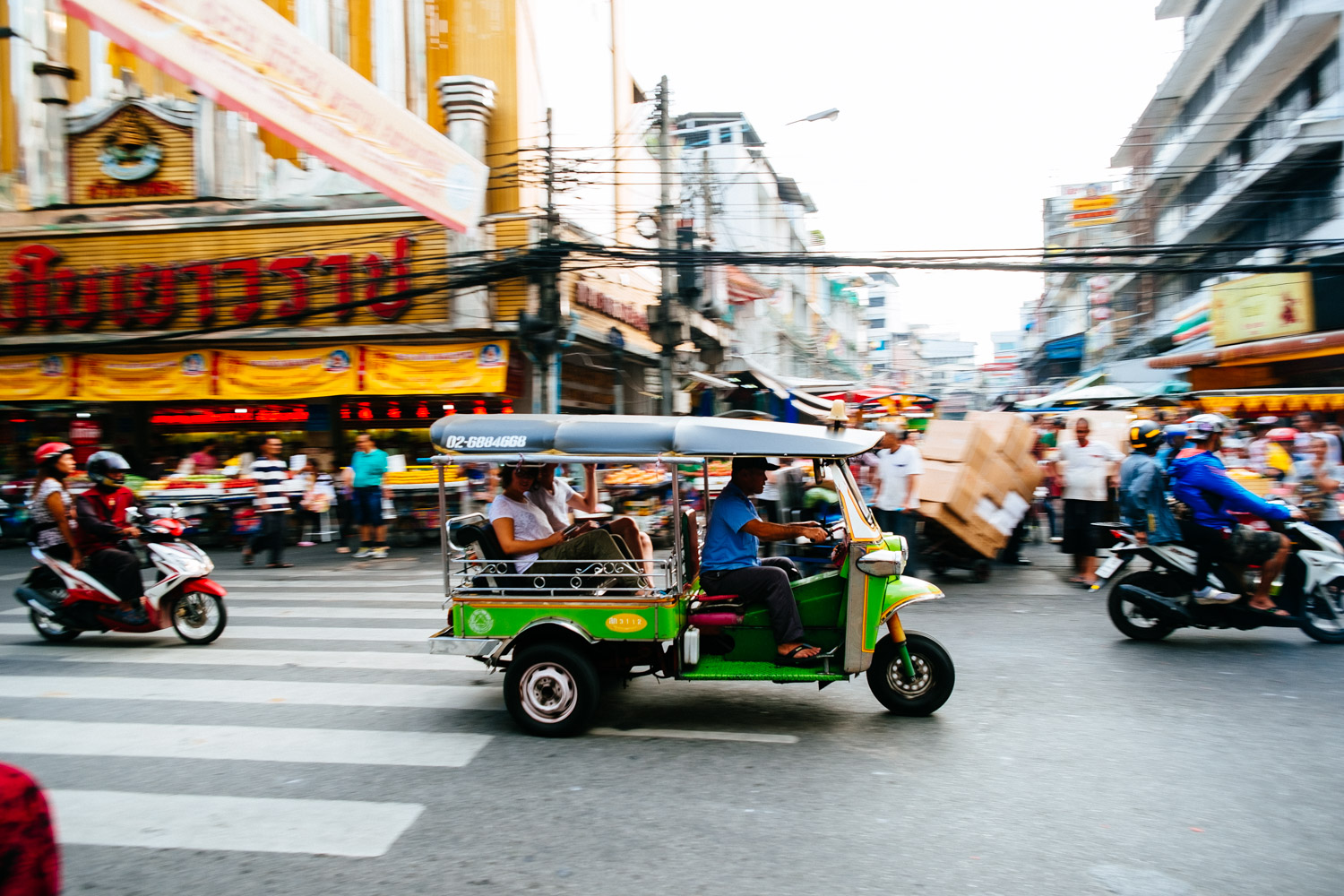 FUJIFILM X-Pro1 (14mm, f/4, 1/125 sec, ISO200)
FUJIFILM X-Pro1 (14mm, f/4, 1/125 sec, ISO200)
Another three images from Bangkok. The Tuk Tuk I shot underneath the MRT. The other two images are from Chinatown.
Less is More:
I always tried to cover as much focal lengths as possible and when traveling with my DSLR I still do. I cover a range from 16mm to 280mm on full frame. Especially the super wide angle zoom is very important for me. Every mm changes the way the lens records the world. A 16mm lens takes a completely different image than a 20mm lens or a 24mm or a 28mm or a 35mm. To have all those focal lengths in just one lens is amazing.
So how come that I happily take nothing but a 21mm (14) and a 42mm (27) when I travel to Asia? The Fuji XF 2.8/14mm is a very wide lens but it is still manageable. It doesn’t distort too much but still covers a large area and helps to put my subject into context with its surrounding. The Fuji XF 2.8/27mm is long enough to provide a completely different perspective while it is still not too narrow like i.e. the 1.4/35. It’s just f2.8 so it lacks the subject isolation capabilities of the 35mm lens but it is super small and light and I prefer the wider view. Update: Replaced by the 23/2 because the lens is wider, one stop faster, has a faster AF and weather sealing and of course an aperture ring.
Those two lenses are probably all you need if your focus is on city trips and street life. And the beauty of this combo is that you are traveling with something that is hardly heavier than a Fuji X100 but much more versatile. I loved my X100 but I can’t live without the 14mm anymore. The 23mm would be the perfect substitute for the X100 but it is a rather big lens. The 27mm is as close as it gets to the X100 regarding size.
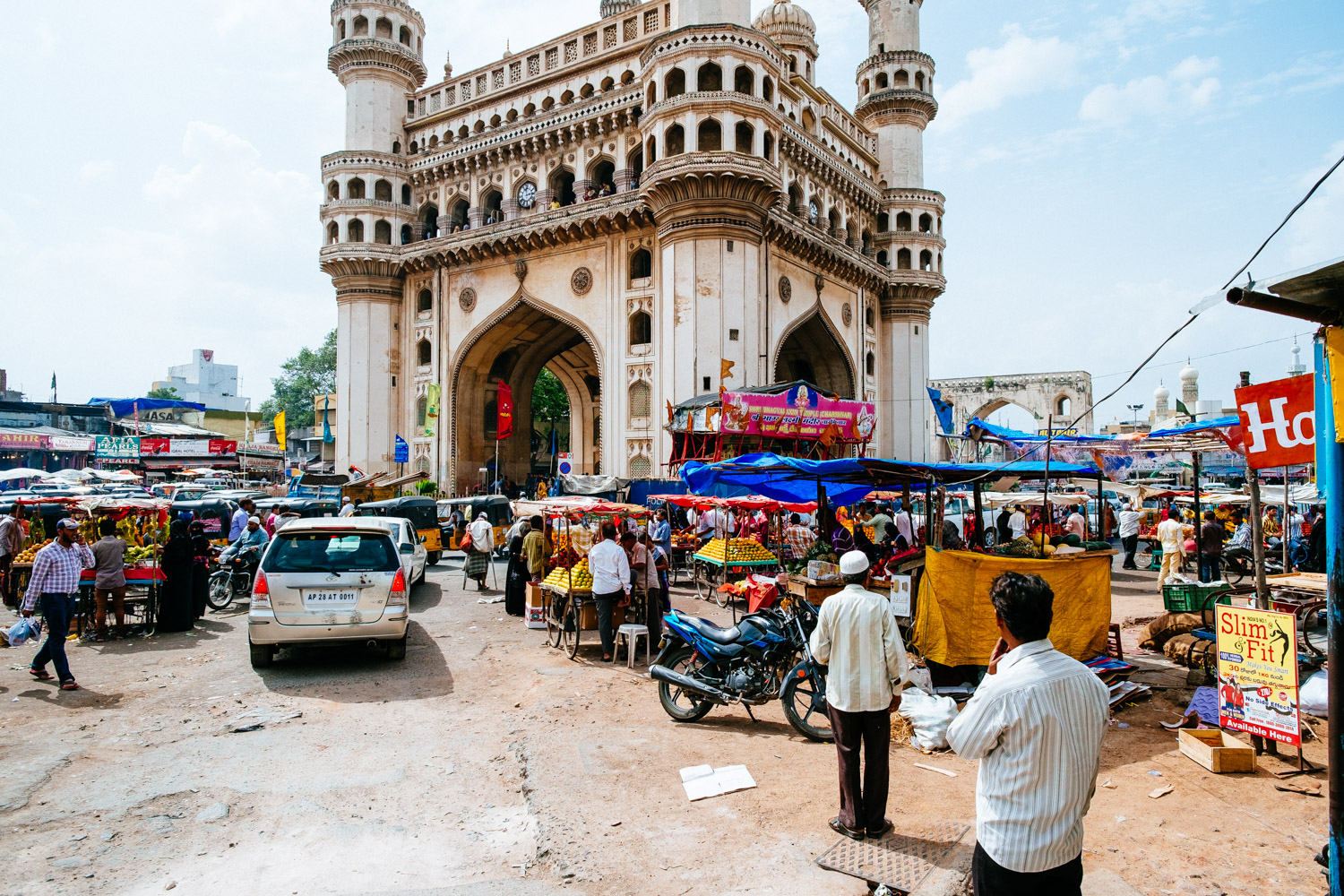 FUJIFILM X-Pro1 (14mm, f/5.6, 1/900 sec, ISO200)
FUJIFILM X-Pro1 (14mm, f/5.6, 1/900 sec, ISO200) FUJIFILM X-Pro1 (14mm, f/4.5, 1/60 sec, ISO320)
FUJIFILM X-Pro1 (14mm, f/4.5, 1/60 sec, ISO320)
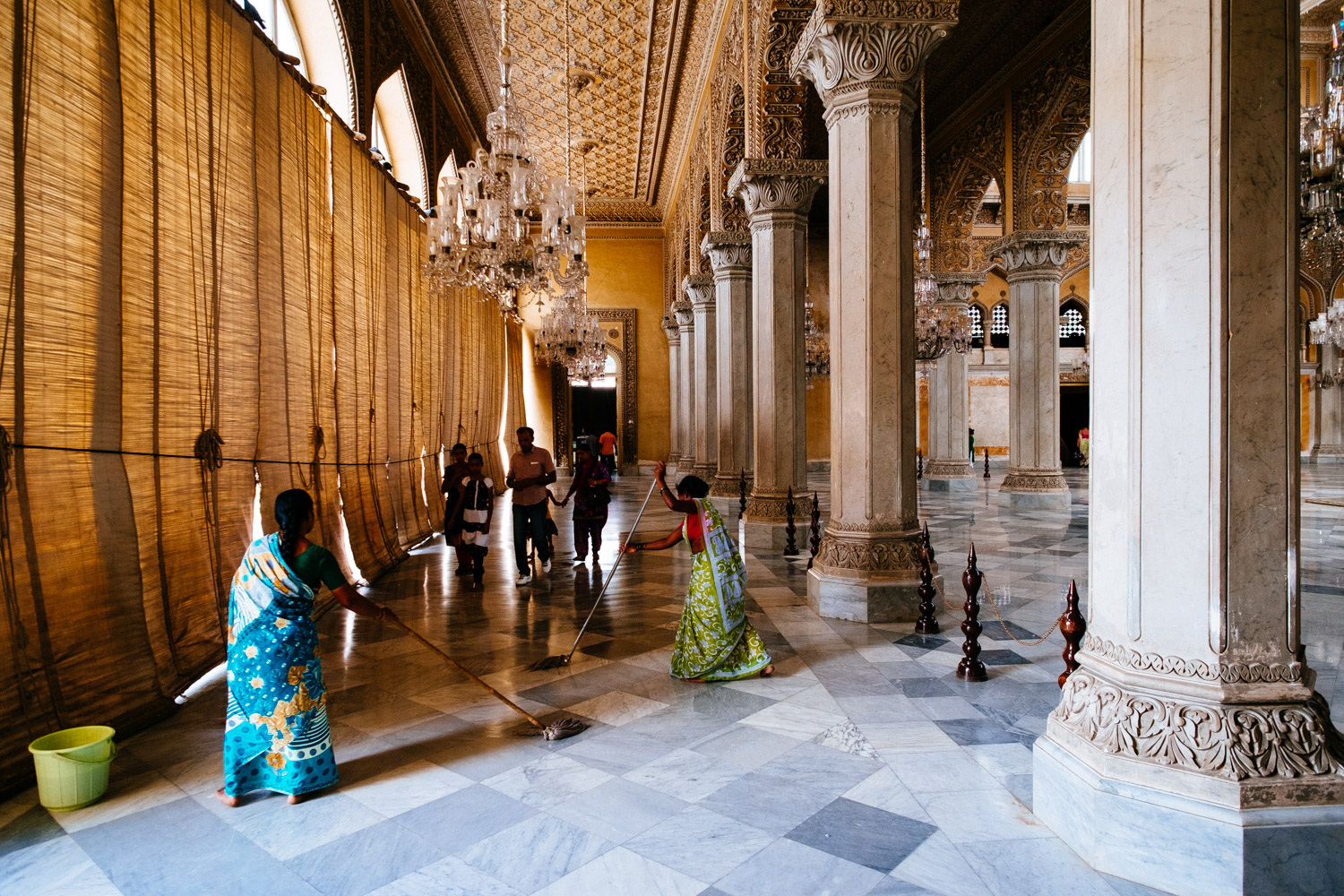 FUJIFILM X-Pro1 (14mm, f/4, 1/125 sec, ISO800)
FUJIFILM X-Pro1 (14mm, f/4, 1/125 sec, ISO800)
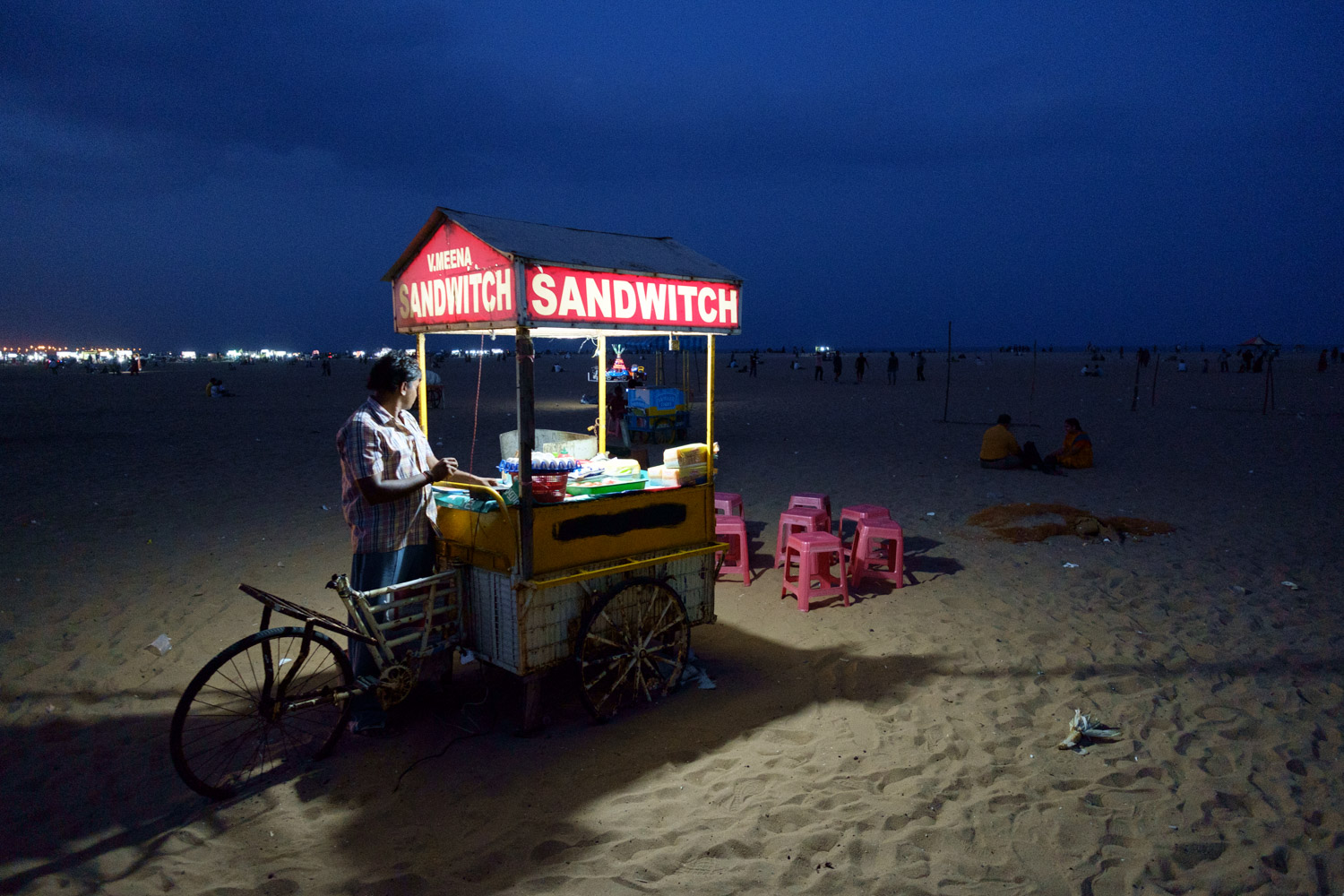 FUJIFILM X-Pro1 (14mm, f/2.8, 1/60 sec, ISO4000)
FUJIFILM X-Pro1 (14mm, f/2.8, 1/60 sec, ISO4000)
Above images are from Hyderabad and Chennai / India. The sandwich with witch craft.
On my first trip to India I almost exclusively shot the 14mm lens. It is a perfect lens for shooting from the hip (without looking through the viewfinder or on the screen). It takes some practice and you must be really close but if you are it creates a very special look. Like in the picture taken inside the Charminar.
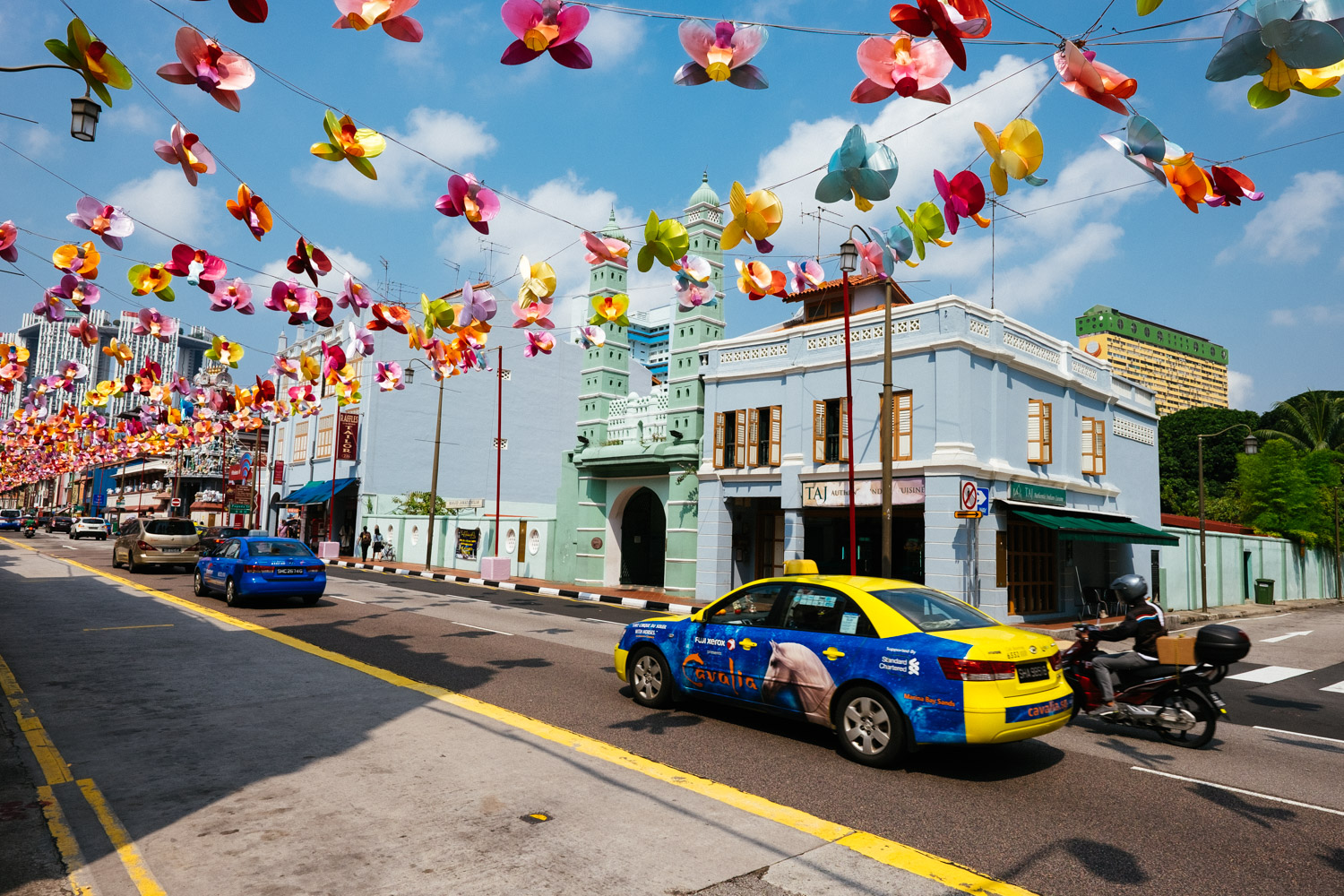 FUJIFILM X-T1 (14mm, f/8, 1/500 sec, ISO200)
FUJIFILM X-T1 (14mm, f/8, 1/500 sec, ISO200)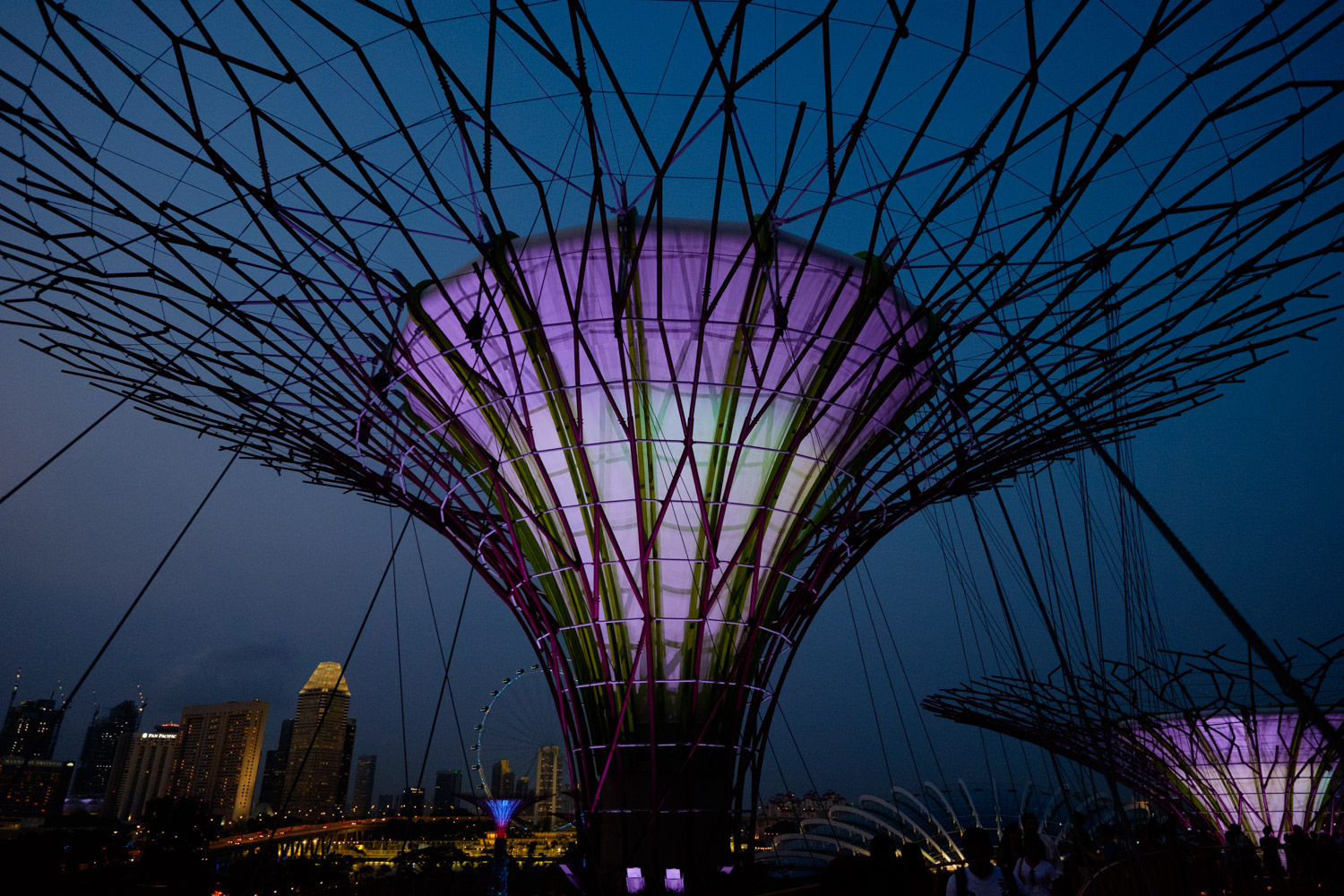 FUJIFILM X-T1 (14mm, f/4, 1/100 sec, ISO2000)
FUJIFILM X-T1 (14mm, f/4, 1/100 sec, ISO2000)
Two images from Singapore. A street in Chinatown and one taken underneath the super trees beside the Marina Bay Sands hotel and casino.
Why all these buttons?
If you compare the Fuji X-T1 to the average DSLR or mirror less camera there is one thing that strikes out. The X-T1 has a dedicated knob or a dial for every function. At first glance it looks like that the camera might be complex to operate but the opposite is true. There was never a digital camera that offered better handling.
There is no room but also no need for a top LCD. You can clearly see aperture, shutter speed, ISO value, drive mode, shooting mode, … You got the picture. This is a fantastic camera to shoot from a tripod. It’s hard to get back to a lesser camera after that experience.
You don’t want to set every parameter by yourself. You don’t even want to deal with the aperture. Fine! Put the ISO dial to Auto-ISO, the shutter speed dial to Auto and the aperture ring on the lens to A and you can shoot in P-Mode and ISO-Auto.
For me it is A-Mode 90% of the time. I set ISO to Auto-ISO with a minimum shutter speed of 1/60s and shutter speed dial to Auto. I choose the aperture on the ring on the lens like I did many, many years back and compensate for bright or dark scenes on the exposure compensation dial. That’s fast and effective. The other 10% the camera is in manual mode.
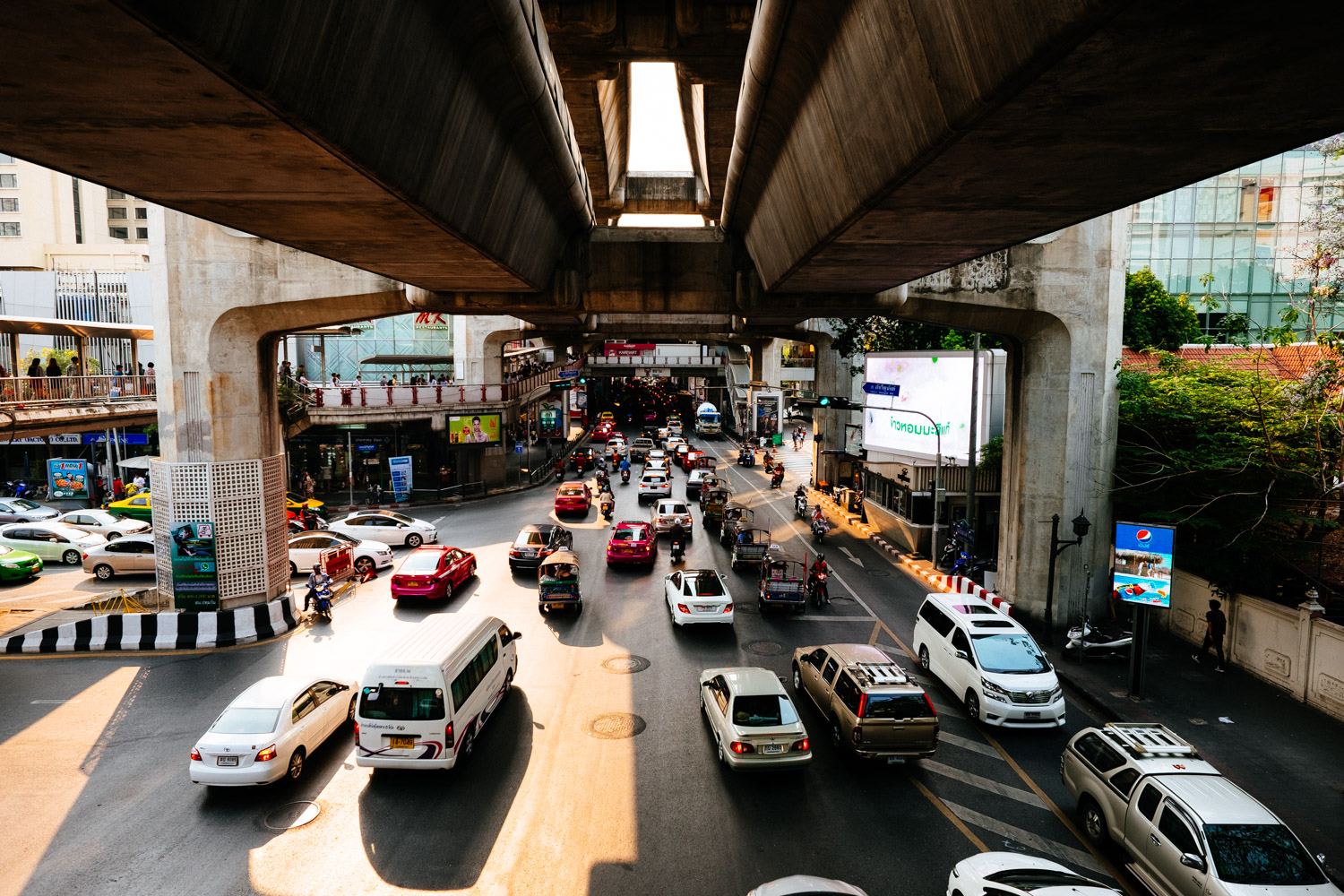 FUJIFILM X-T1 (14mm, f/5.6, 1/125 sec, ISO200)
FUJIFILM X-T1 (14mm, f/5.6, 1/125 sec, ISO200)
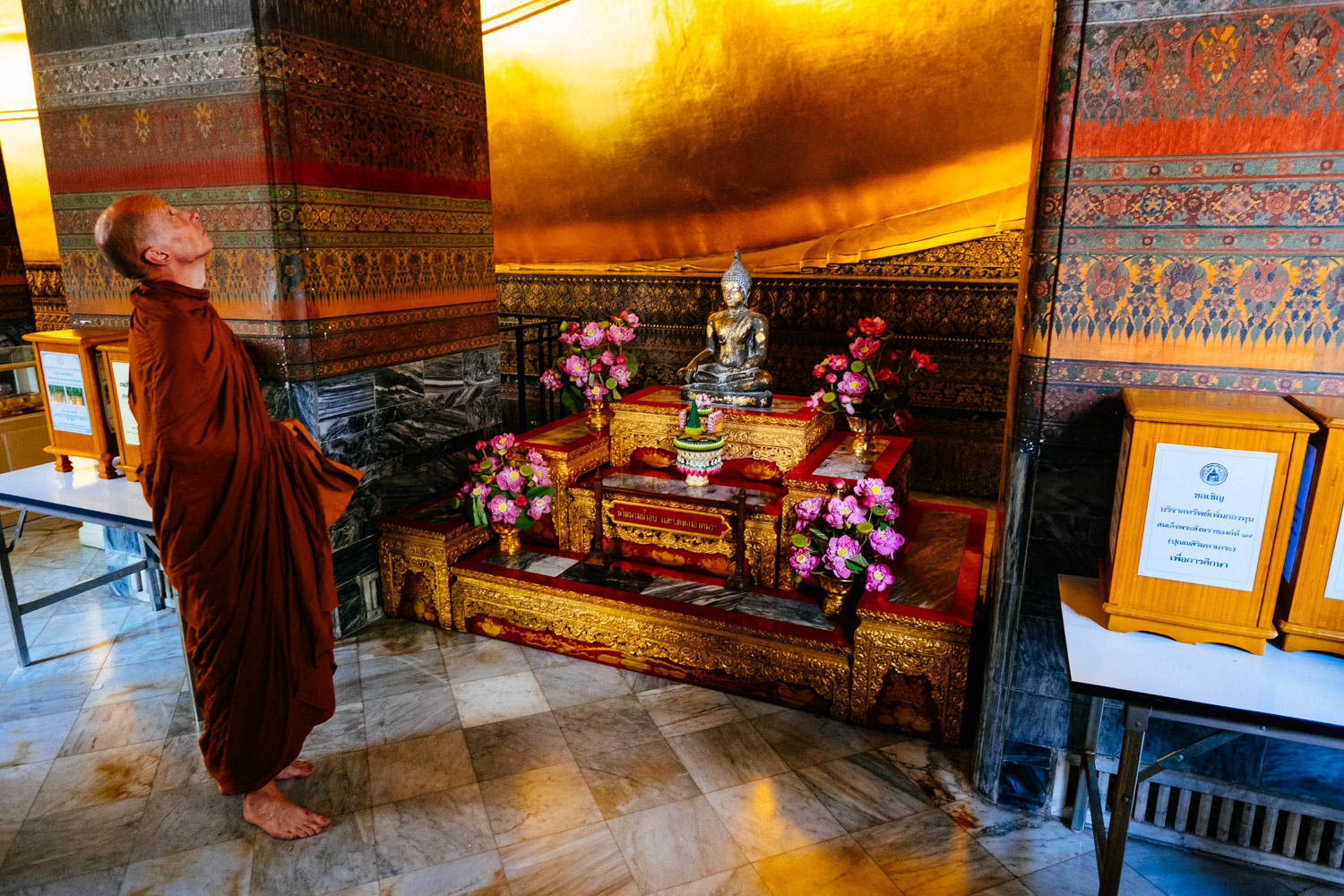 FUJIFILM X-T1 (14mm, f/4, 1/80 sec, ISO1250)
FUJIFILM X-T1 (14mm, f/4, 1/80 sec, ISO1250)
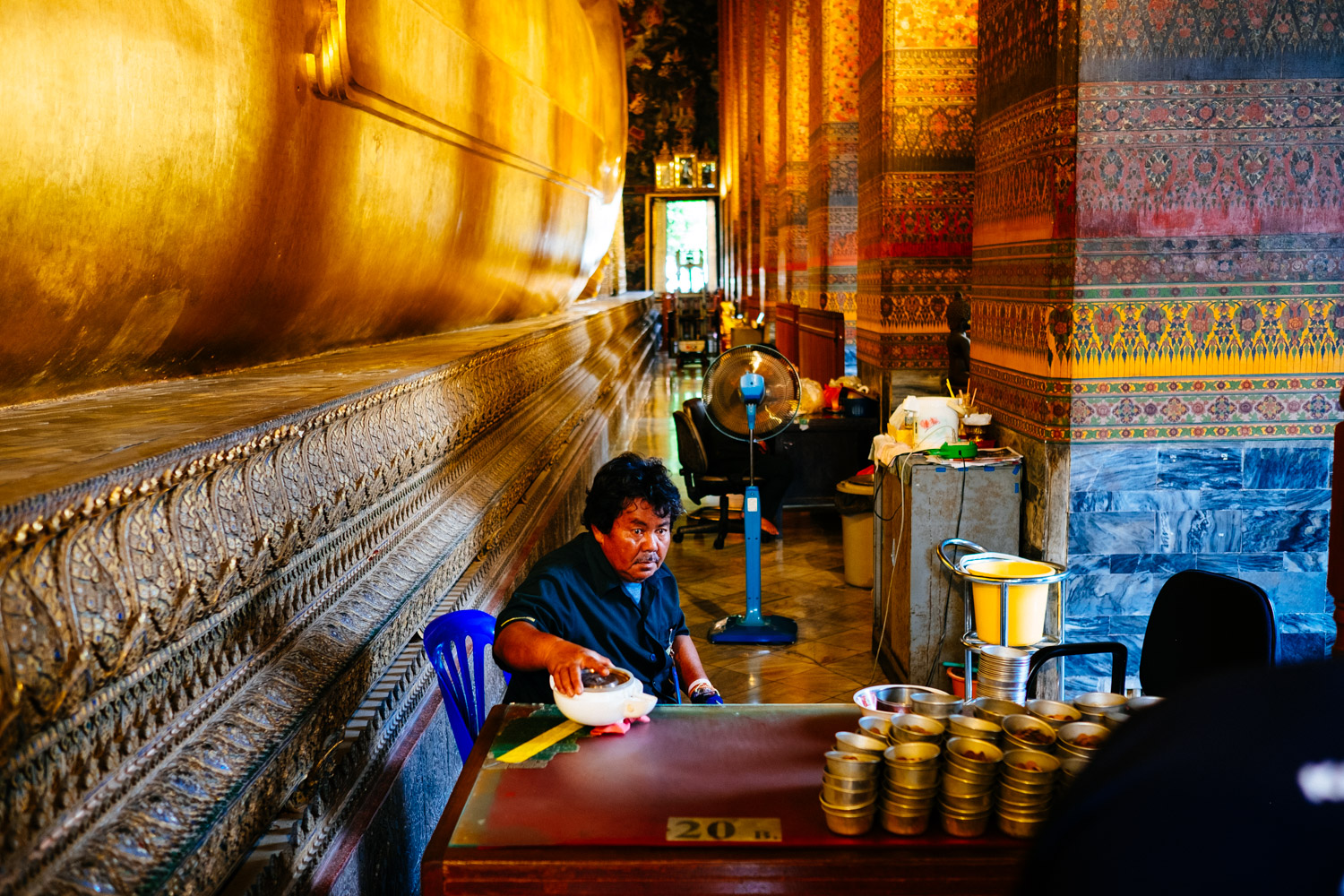 FUJIFILM X-T1 (23mm, f/2, 1/80 sec, ISO400)
FUJIFILM X-T1 (23mm, f/2, 1/80 sec, ISO400)
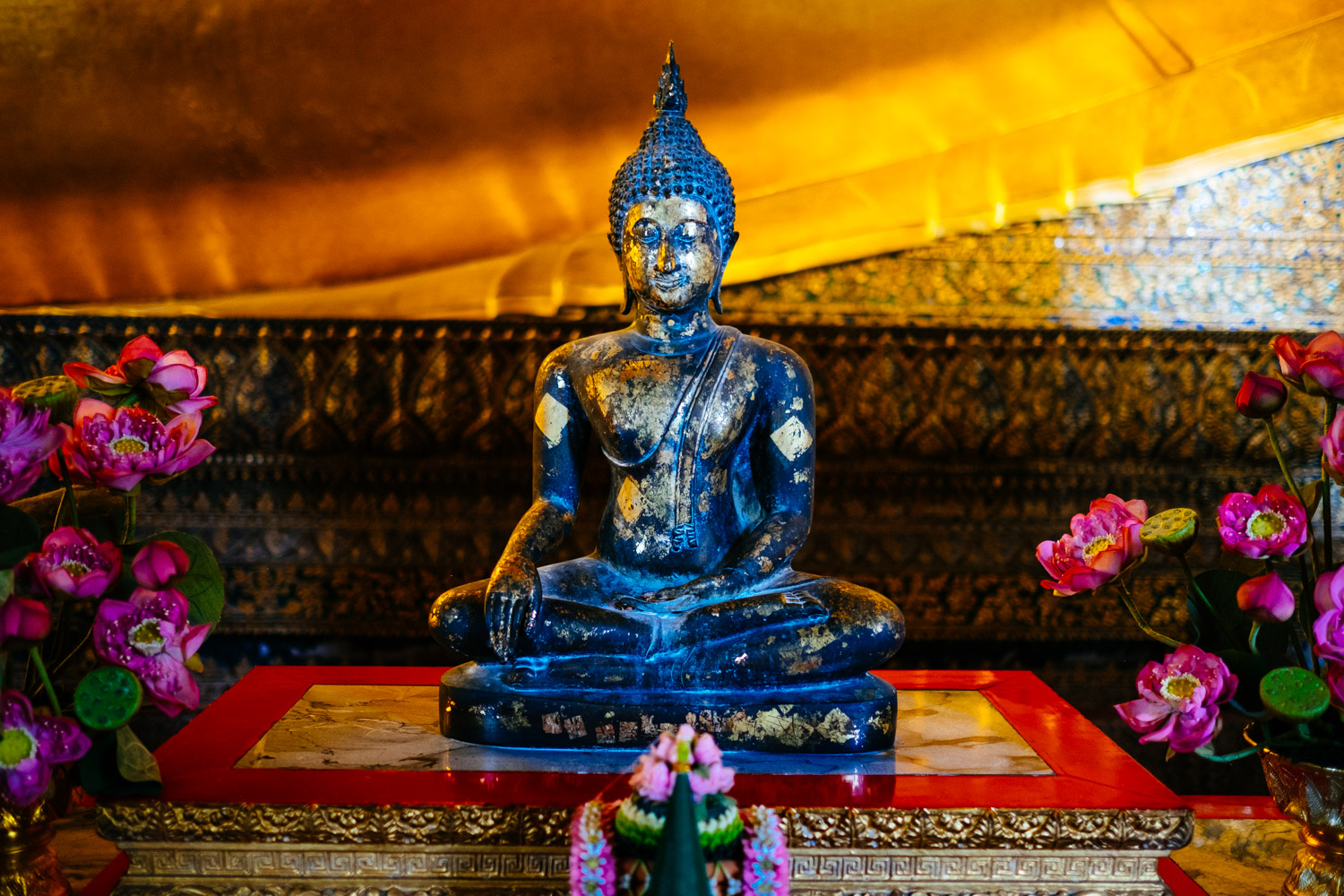 FUJIFILM X-T1 (23mm, f/1.4, 1/80 sec, ISO320)
FUJIFILM X-T1 (23mm, f/1.4, 1/80 sec, ISO320)
Another four from Bangkok. Road underneath the MRT. Reclining Buddha.
The X Effect:
Of course it is nice to carry a small and light camera. But the biggest advantage is that a small camera with a small lens doesn’t trow any attention to itself or to the guy who carries it around. Now imagine that this camera is also much quieter than most other cameras. The Fuji X system cameras are not as quiet as the X100 with its leaf shutter but they are still very quiet. In normal ambient noise nobody will here that you just took an image.
I’m not telling you that you become invisible just because you wear a small, black camera with a small lens. That’s not gonna happen especially if you are the only person with white skin in a temple in the South of India or if you are over 6 feet tall in Vietnam or Indonesia. You will still stick out. I stick out all the time when I’m in Asia but at least my camera gear doesn’t scream pro photographer or $$$. And if you take a portrait you will find out that your model is much more relaxed too.
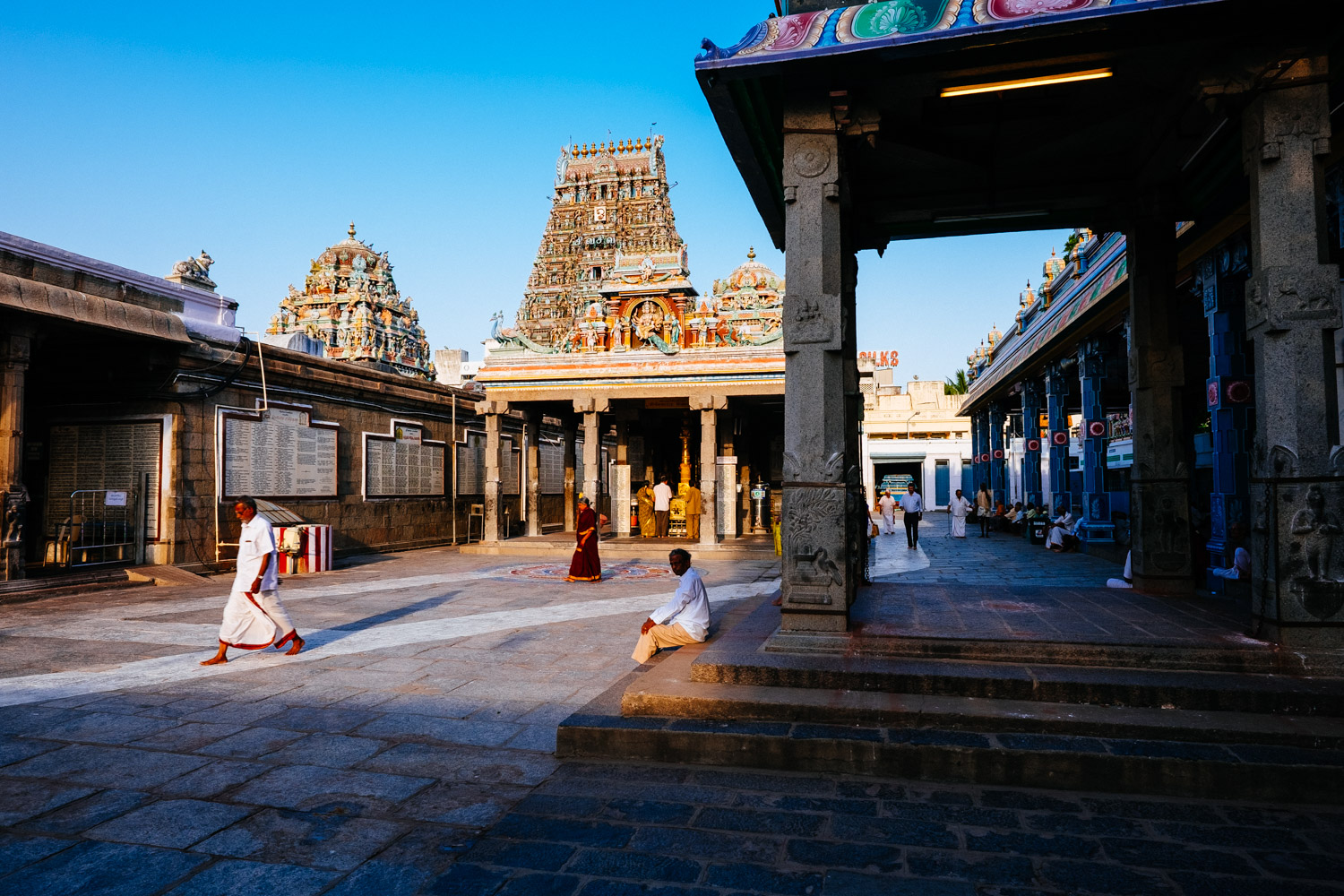 FUJIFILM X-T1 (14mm, f/8, 1/105 sec, ISO200)
FUJIFILM X-T1 (14mm, f/8, 1/105 sec, ISO200)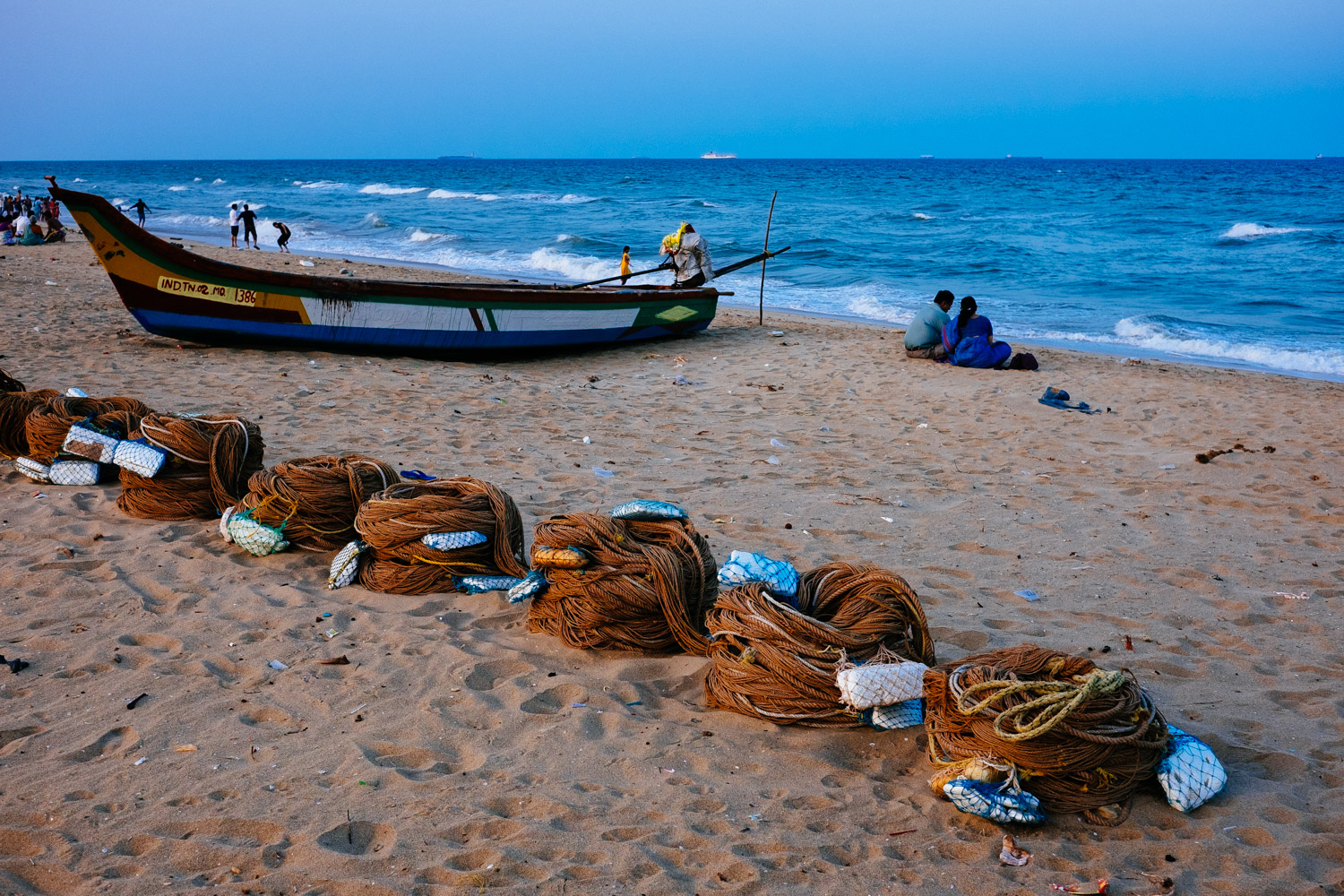 FUJIFILM X-T1 (27mm, f/5, 1/100 sec, ISO500)
FUJIFILM X-T1 (27mm, f/5, 1/100 sec, ISO500)
 FUJIFILM X-T1 (14mm, f/5, 1/1900 sec, ISO200)
FUJIFILM X-T1 (14mm, f/5, 1/1900 sec, ISO200)
 FUJIFILM X-T1 (27mm, f/5, 1/800 sec, ISO200)
FUJIFILM X-T1 (27mm, f/5, 1/800 sec, ISO200)
Four images from my last trip to India taken in Chennai and New Delhi.
Are Fuji cameras tough enough?
In the last week of my very first trip with my brand new Fuji X100 the camera started to act weird. It overexposed images by a couple of stops. The only images that still looked OK where the ones shot at f2.0. At home I found out that the problem is well known. On the internet it was called “sticky aperture blades”. The camera failed to stop down to the chosen aperture. That’s why the only correctly exposed shots where the ones taken wide open. Luckily Fuji fixed the problem free of charge by replacing the whole aperture unit.
But I have to admit that I worried a little on the next couple of trips that the camera would break down again. It never broke down again. It worked like a charm in a snowstorm at -17 degrees Celsius at the Red Square in Moscow despite the fact that it isn’t weather sealed. With my Fuji X Pro-1 and now the Fuji X-T1 it is just the same. They both have never let me down. Both get warm and a little uncomfortable to hold if I use them in India at 40 degrees Celsius but they never shut down nor did they ever fail.
They might be small and light but they are as though as any other professional camera.
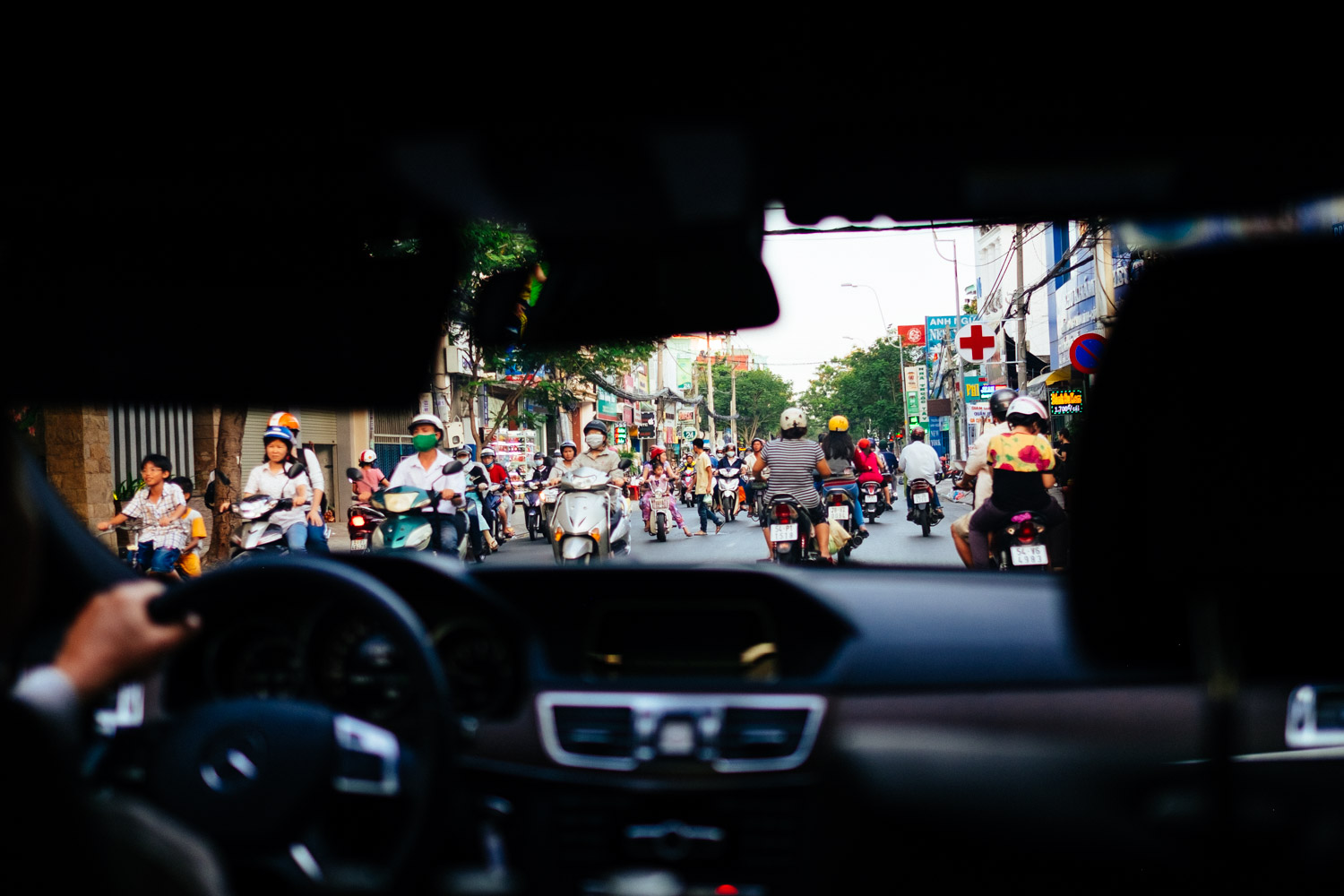 FUJIFILM X-T1 (23mm, f/1.4, 1/500 sec, ISO200)
FUJIFILM X-T1 (23mm, f/1.4, 1/500 sec, ISO200)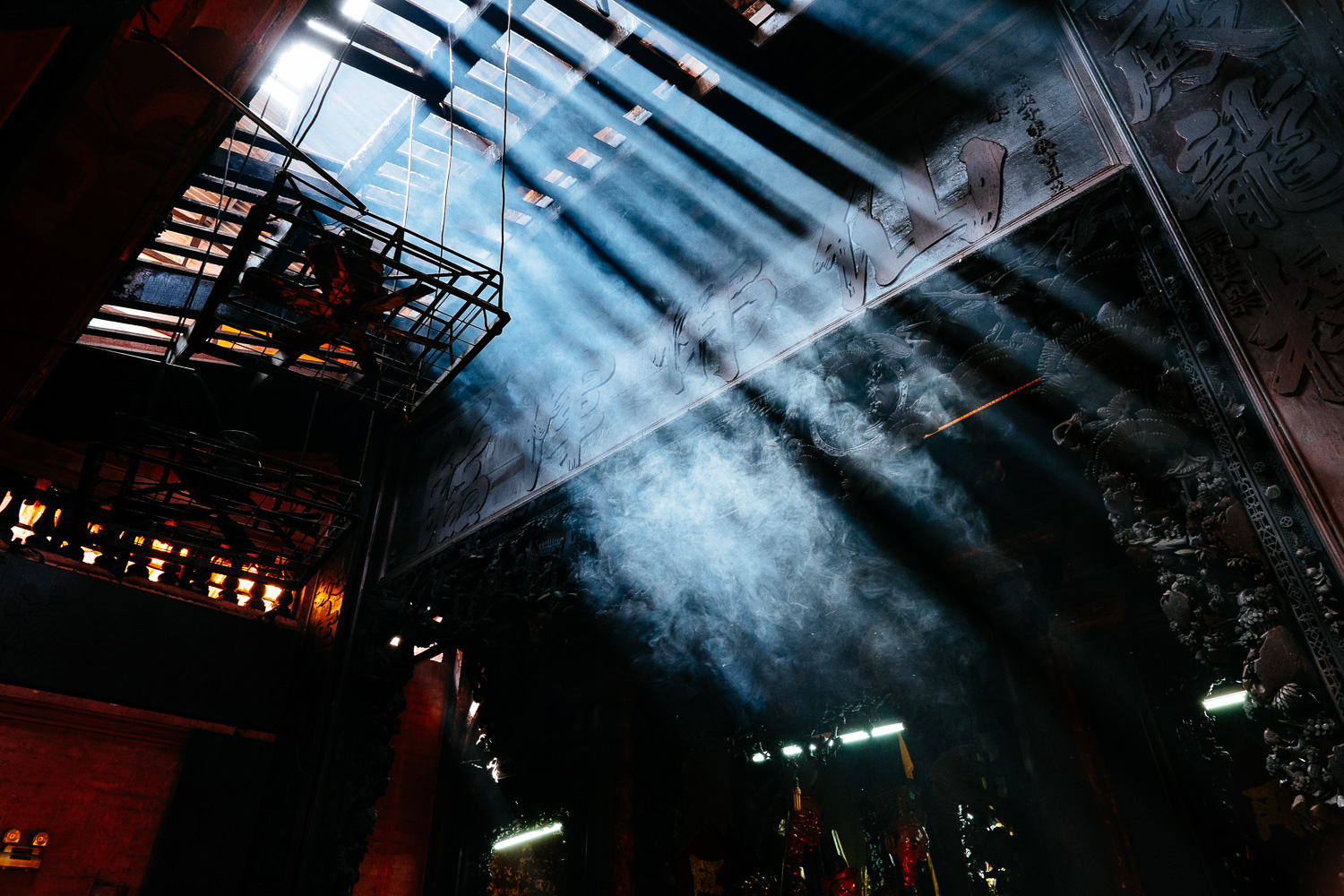 FUJIFILM X-T1 (14mm, f/5.6, 1/40 sec, ISO1250)
FUJIFILM X-T1 (14mm, f/5.6, 1/40 sec, ISO1250)
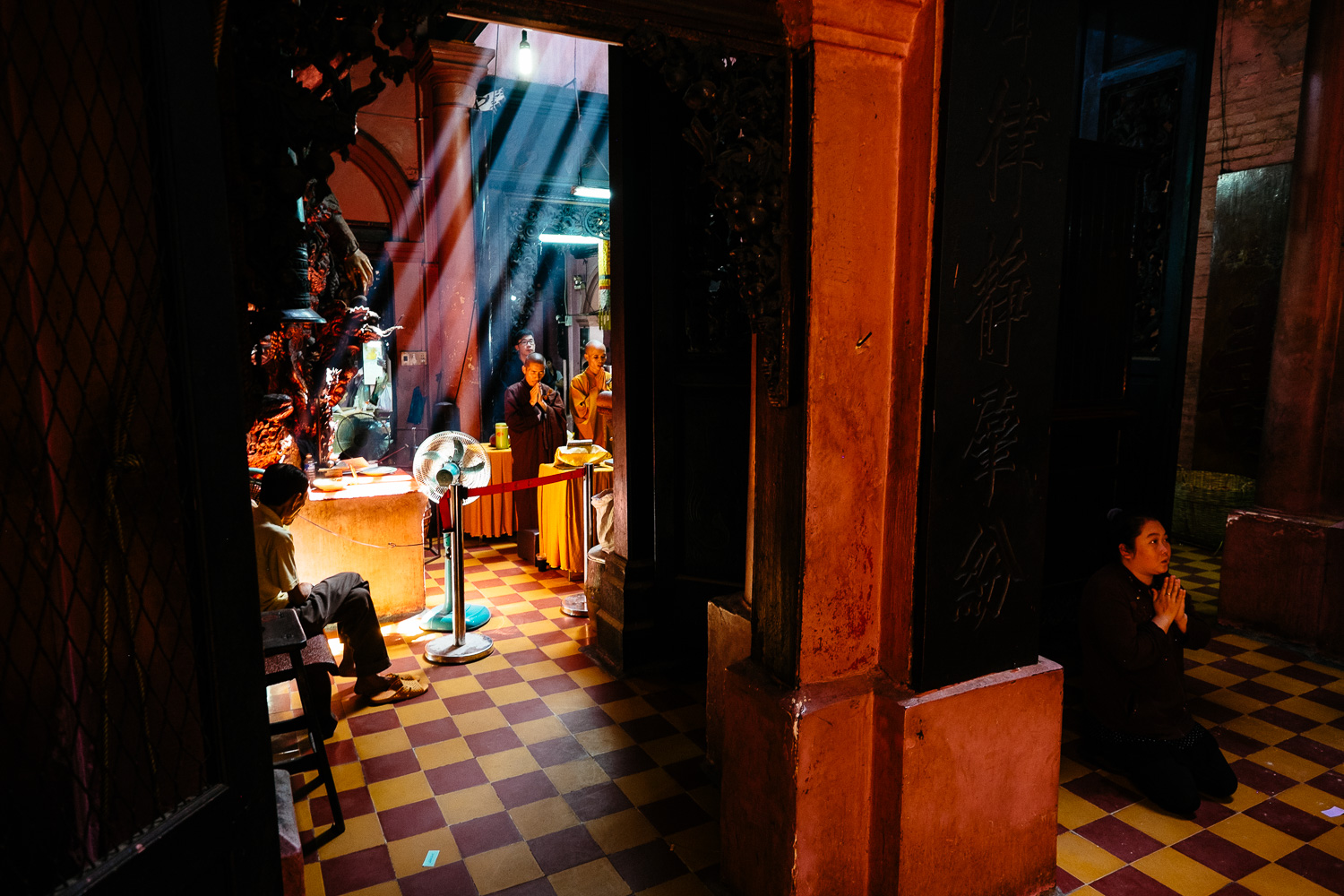 FUJIFILM X-T1 (14mm, f/3.6, 1/30 sec, ISO640)
FUJIFILM X-T1 (14mm, f/3.6, 1/30 sec, ISO640)
Three images from HCMC, Vietnam. One I took during my ride from the airport to the hotel. The other two in the Emperor Jade Pagoda. (Thanks to a poster at dpreview who posted some images of this great temple)
X-Trans: Good, Bad or Ugly?
Since the Fuji X Pro-1 came out there is an ongoing discussion about the X-Trans sensor. While there where some issues with Lightroom in the past this has been sorted out with later versions of the program. Some people claim that the only option to get a good quality image out of a Fuji RAW file is to use some exotic, clumsy RAW converter. I don’t think so. I use Lightroom ever since the program came out in 2007 and I’m not willing to change my workflow just because of a camera. And there is no need to do so. All I know is that the image quality I get from my Fuji cameras is practicably as good as what I get from my Canon 6D. The images are sharp and high ISO is impressive.
White balance is excellent too, the colors look natural but a little muted and contrast is too low. I prefer to use VSCO’s film presets especially the color slide films to get a punchier look.
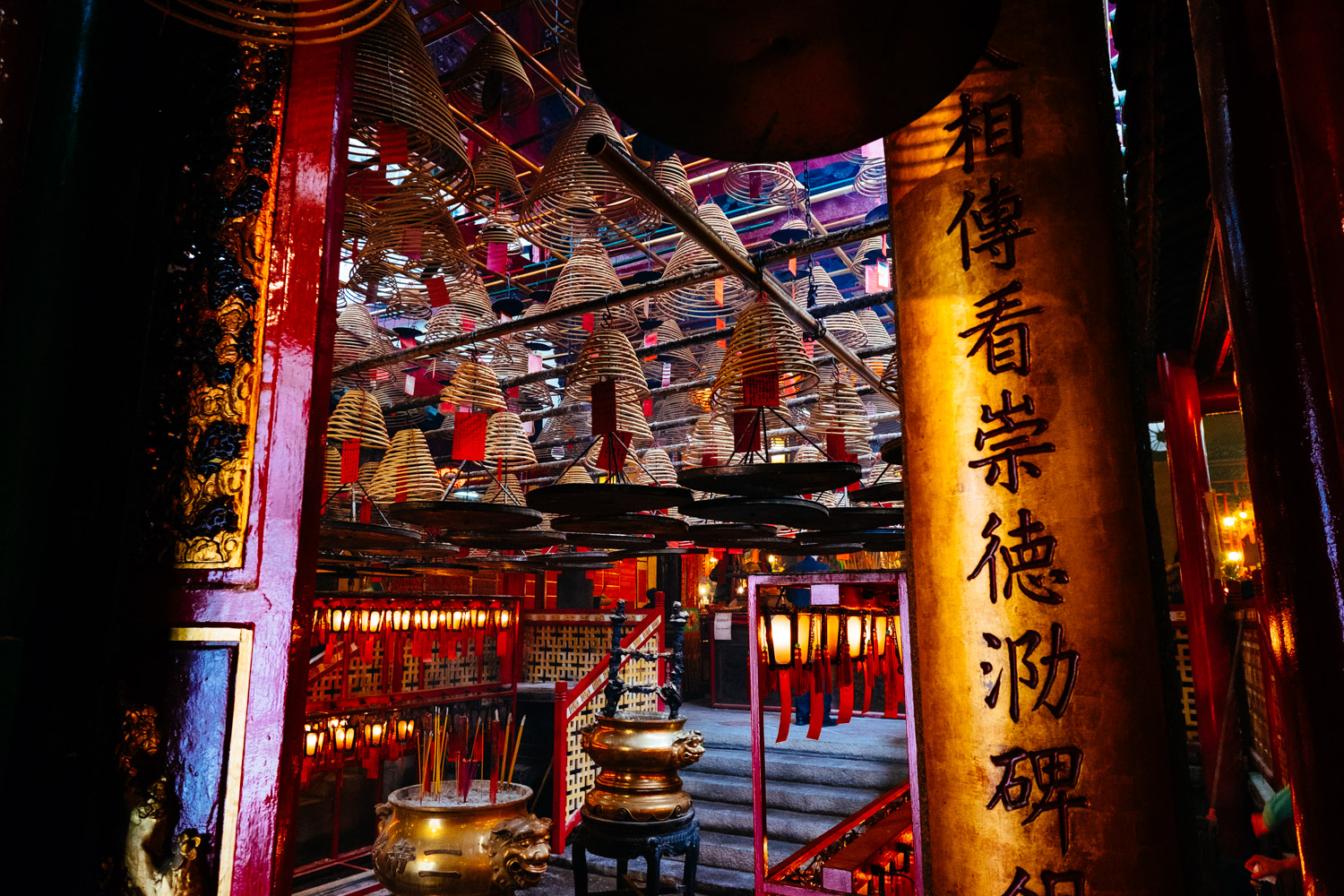 FUJIFILM X-T1 (14mm, f/4, 1/60 sec, ISO1250)
FUJIFILM X-T1 (14mm, f/4, 1/60 sec, ISO1250)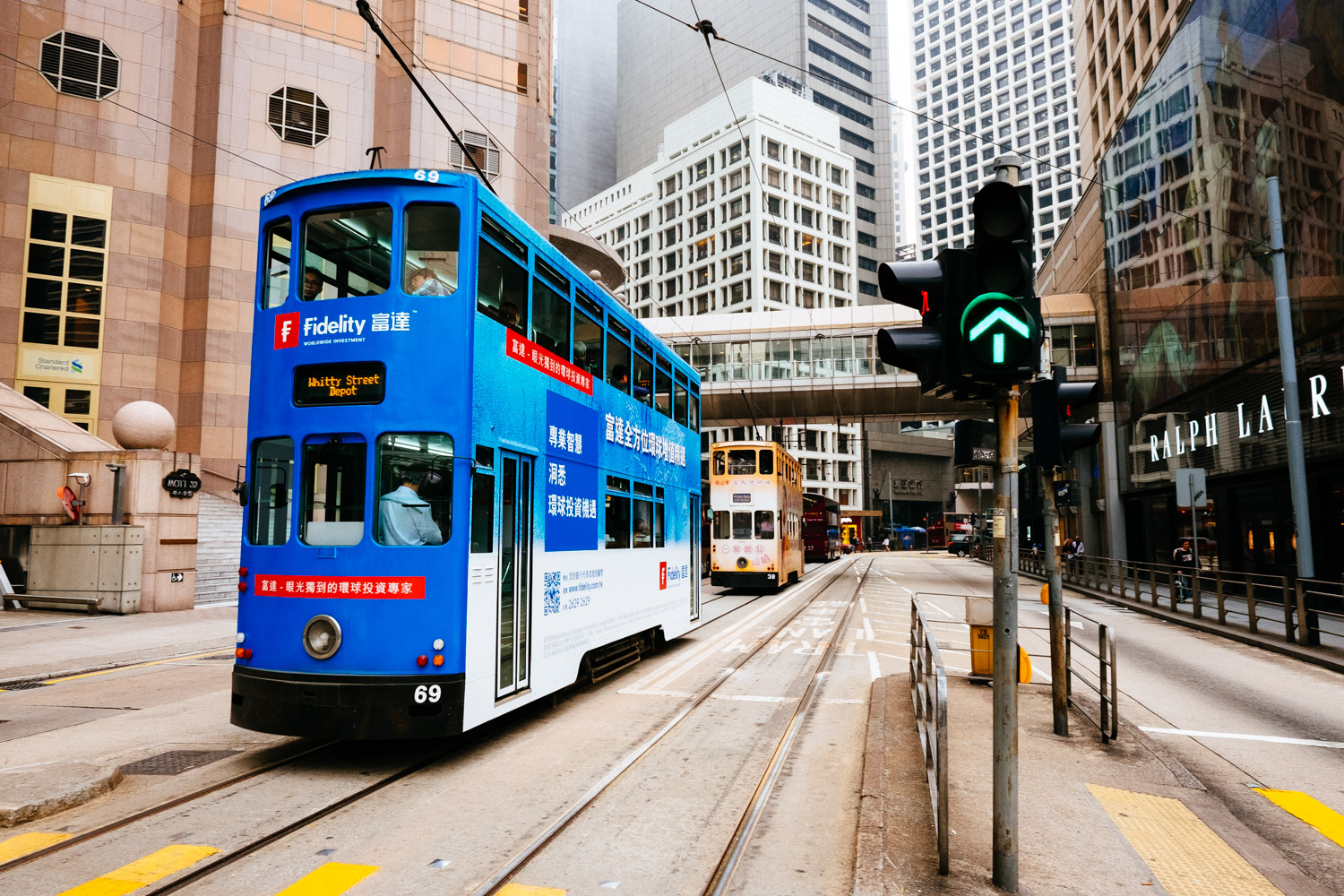 FUJIFILM X-T1 (14mm, f/8, 1/125 sec, ISO800)
FUJIFILM X-T1 (14mm, f/8, 1/125 sec, ISO800)
The last two images are from Hongkong: Man Mo Temple and Downtown.
Fuji X system compared to its competition:
Surprisingly the Fuji X system and the Fuji X-T1 have very little competition. Canon and Nikon doesn’t offer anything remotely capable and compact and both don’t put a focus on good APS-C lenses.
Olympus and Panasonic offer many lenses and fast operation but m43, while very capable, is still nowhere near to what you can get from a good APS-C size sensor. Leica offers an APS-C system camera now but regarding features it compares to the original Sony NEX 5 which came out in 2010 and it offers iPhone style handling (which is a negative thing if we talk about a camera). I have no idea what Leica was thinking.
The only competition for Fuji comes from Sony. And it is a double attack. On the lower end there is the Sony A6000. A small mirror less camera with integrated viewfinder, fantastic 24MP APS-C sensor and outstanding focus tracking. Why did I say on the lower side? The shooting experience is lacking and both EVF and screen look small and cheap compared to the ones on the Fuji X-T1. But it is half the price and its AF for moving subjects runs circles around the X-T1. Biggest issue is the lack of lenses but the Zeiss 4/16-70 OIS looks nice.
The bigger competition comes from Sony’s A7 line. Sony A7 cameras are small mirror less cameras with a full frame sensor inside. Currently there are 4 and soon there will be a fifth model. There is a low light specialist with 12MP, two 24MP models (old and new version) and a 36MP without optical low pass filter for ultimate details. If paired with a very good lens they all beat the Fuji X-T1 for pure image quality.
But here is the thing. Currently there are not too many native lenses available. Sony got the zooms covered: 16-35, 24-70, 70-200. All f4 and image stabilized. But they lack the primes. When they started the system there was just a slow 35/2.8 and a 55/1.8. Hardly exciting lenses. Meanwhile there is a 28/2 and a fast but fat and heavy 35/1.4 that will come out soon. But this is the main problem with the Sony A7 system: Lenses are either slow or massive. That’s the price to pay for the full frame sensor. You can’t trick the laws of physics. It is still by far the most impressive system beside Fuji X. Meanwhile I got the A7R plus adapter to shoot landscapes with my Canon lenses.
Conclusion:
- This has become my longest blogpost ever. Sorry for that. The next ones will be much shorter.
- To me Fuji X offers the best compromise in quality and size. The camera bodies, especially the X-T1, offer a fantastic shooting experience and almost all lenses are extremely good too. There is an above average kit lens, two fast zooms for wedding and event shooters, a very nice travel zoom and a great super wide angle zoom. But for me the primes make the difference. Beside Leica there is no other manufacturer that offers such a choice of high quality primes. They are all great but for me the 14, the 23 and the 56 stand out. The 27 is a fantastic small lens and the 35 is a steal. The new 16/1.4 seems to be great too.
- In short: Fantastic camera but an even better system. THE camera system for travel photography.
